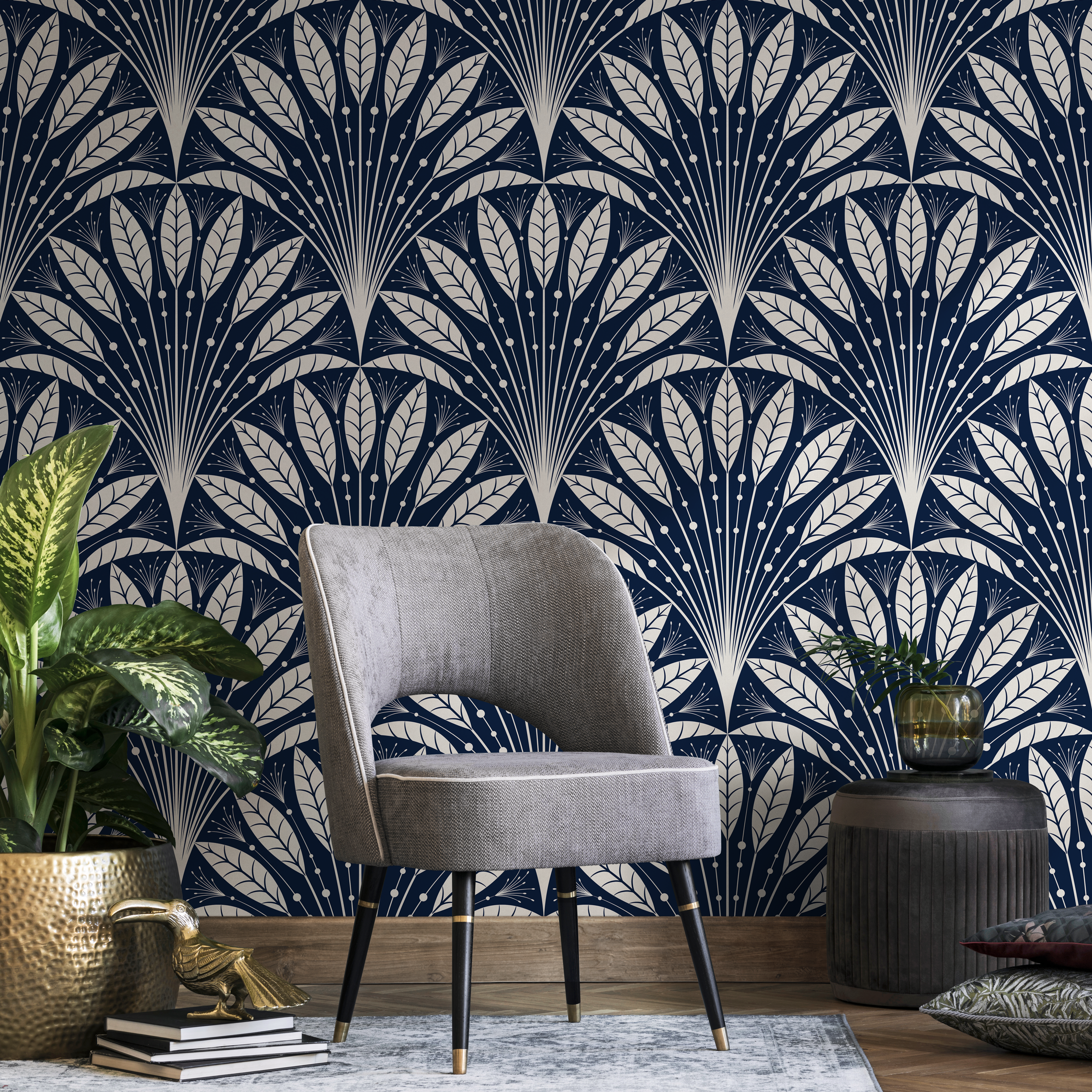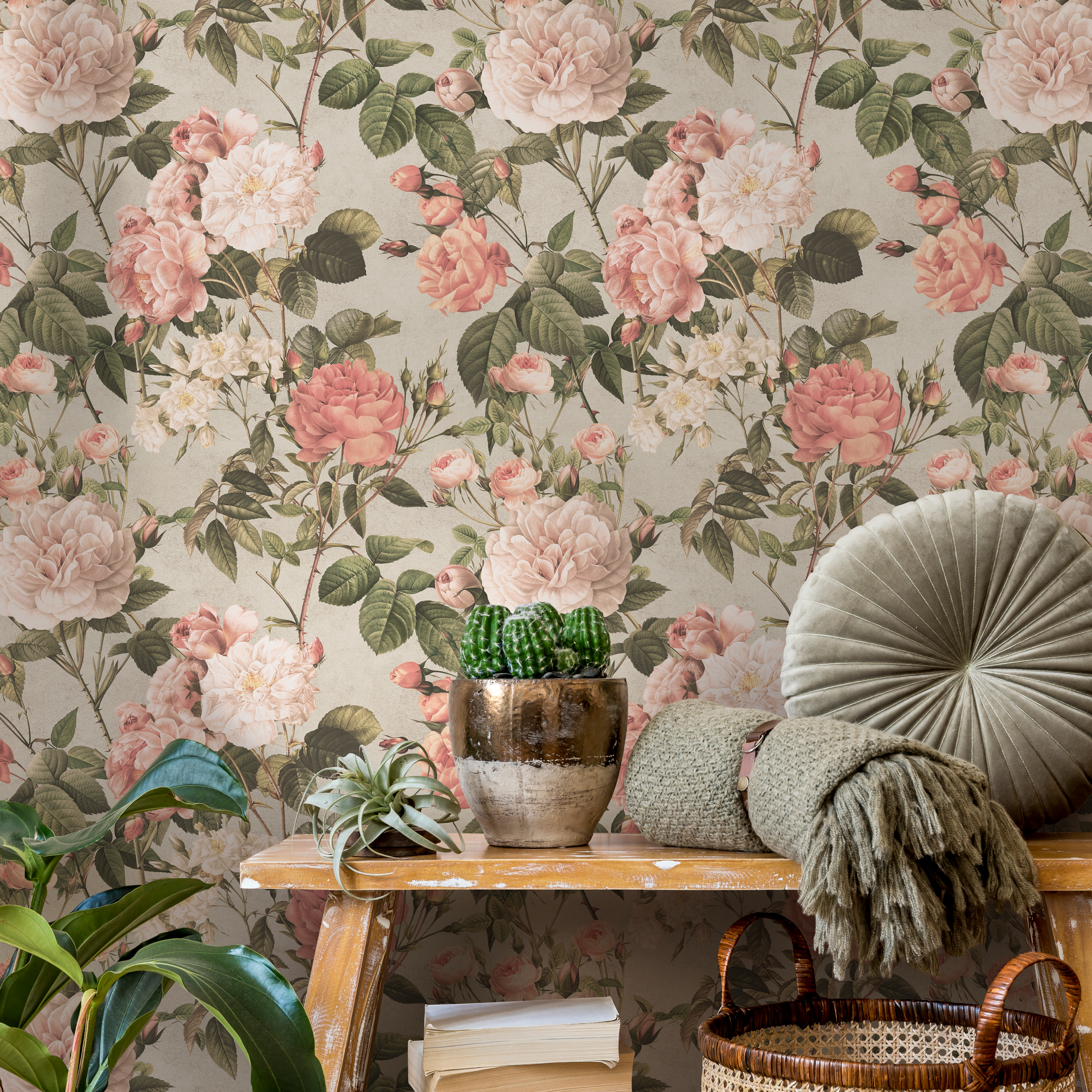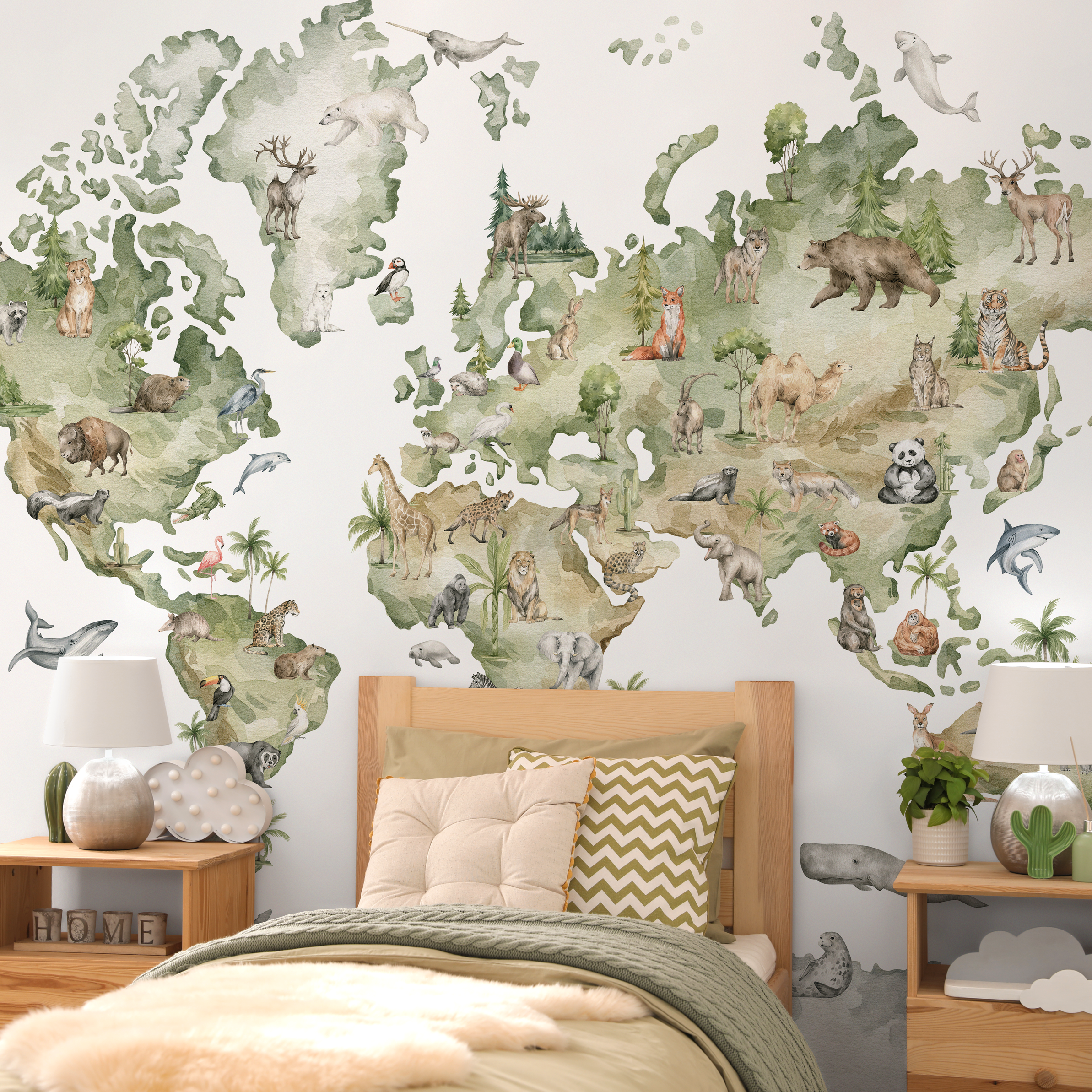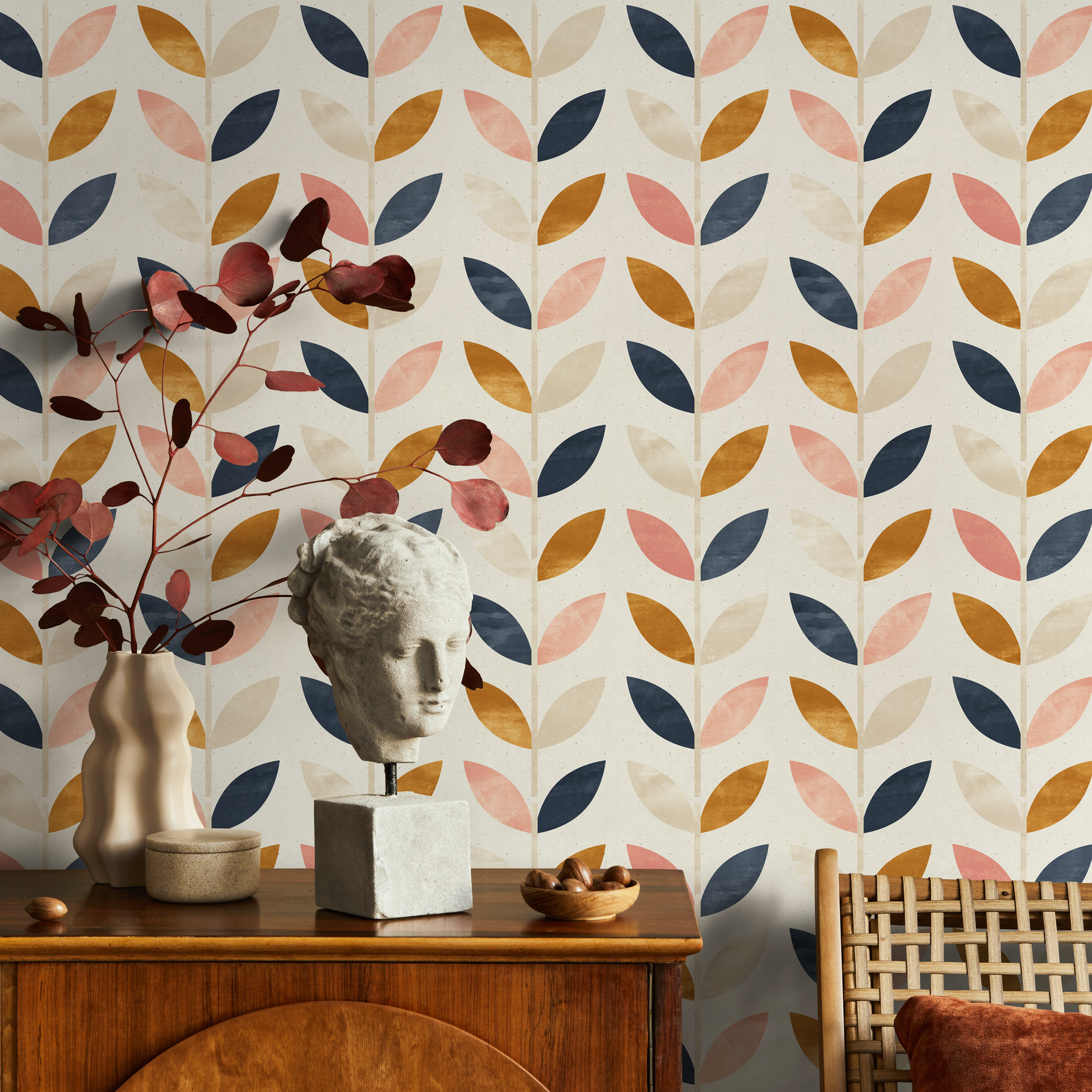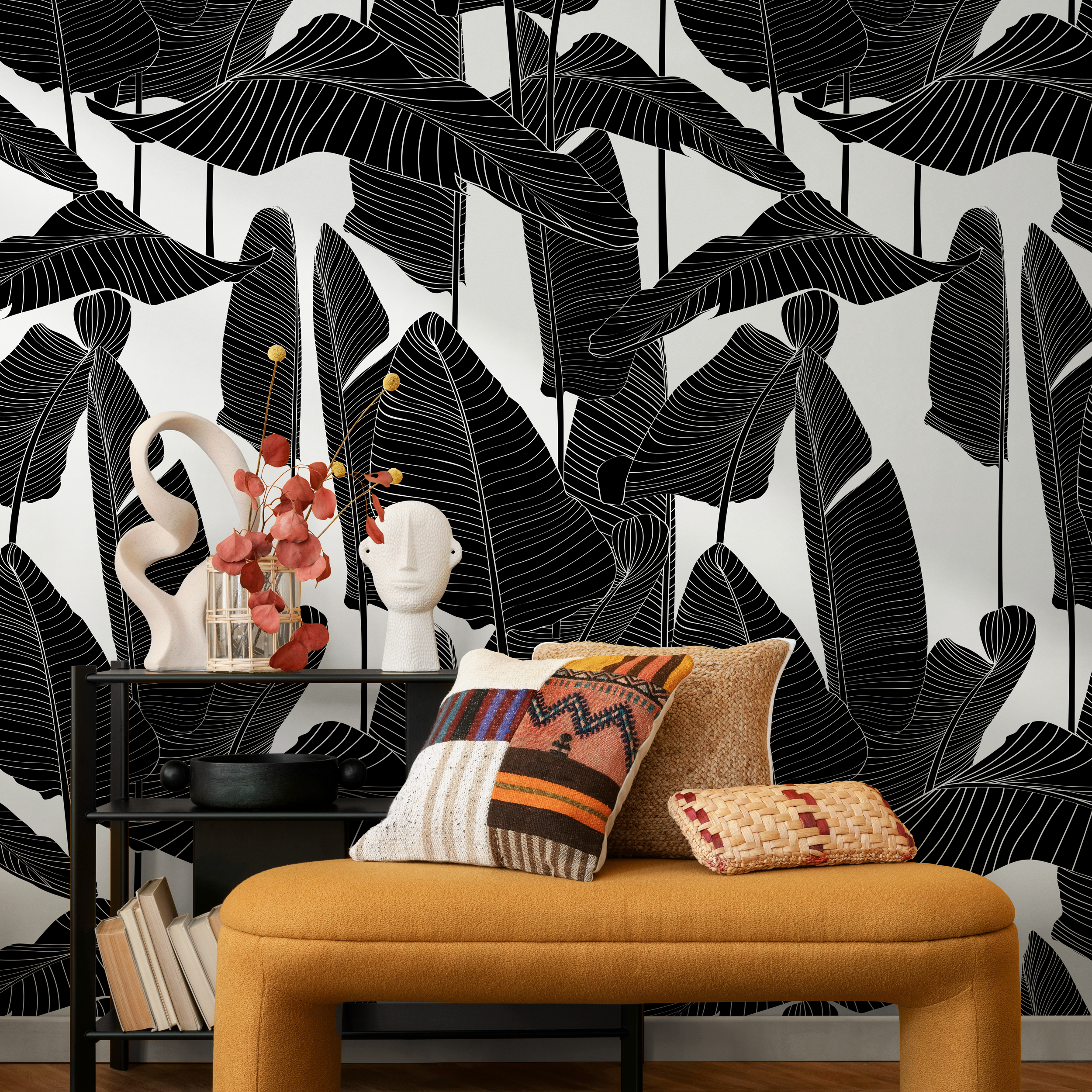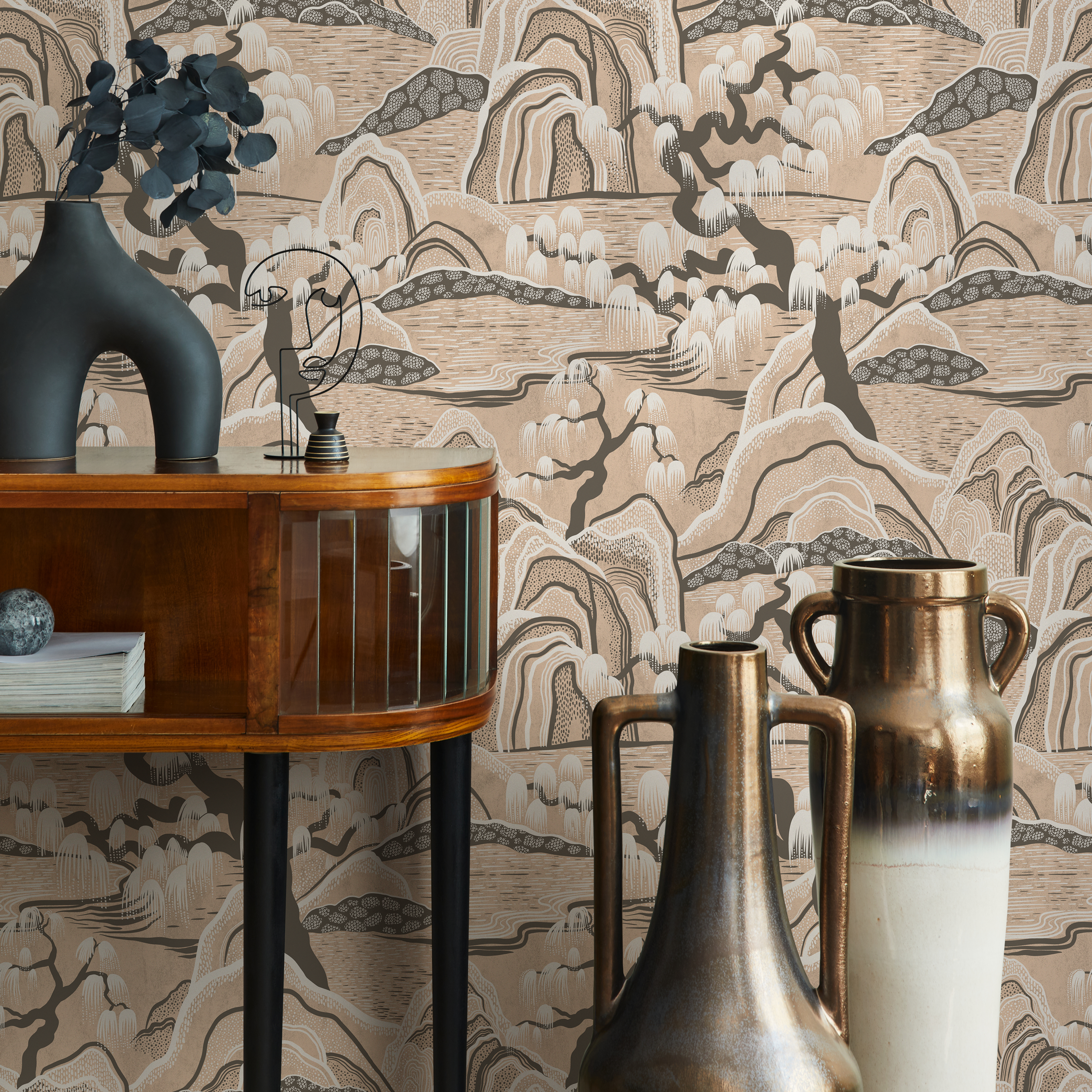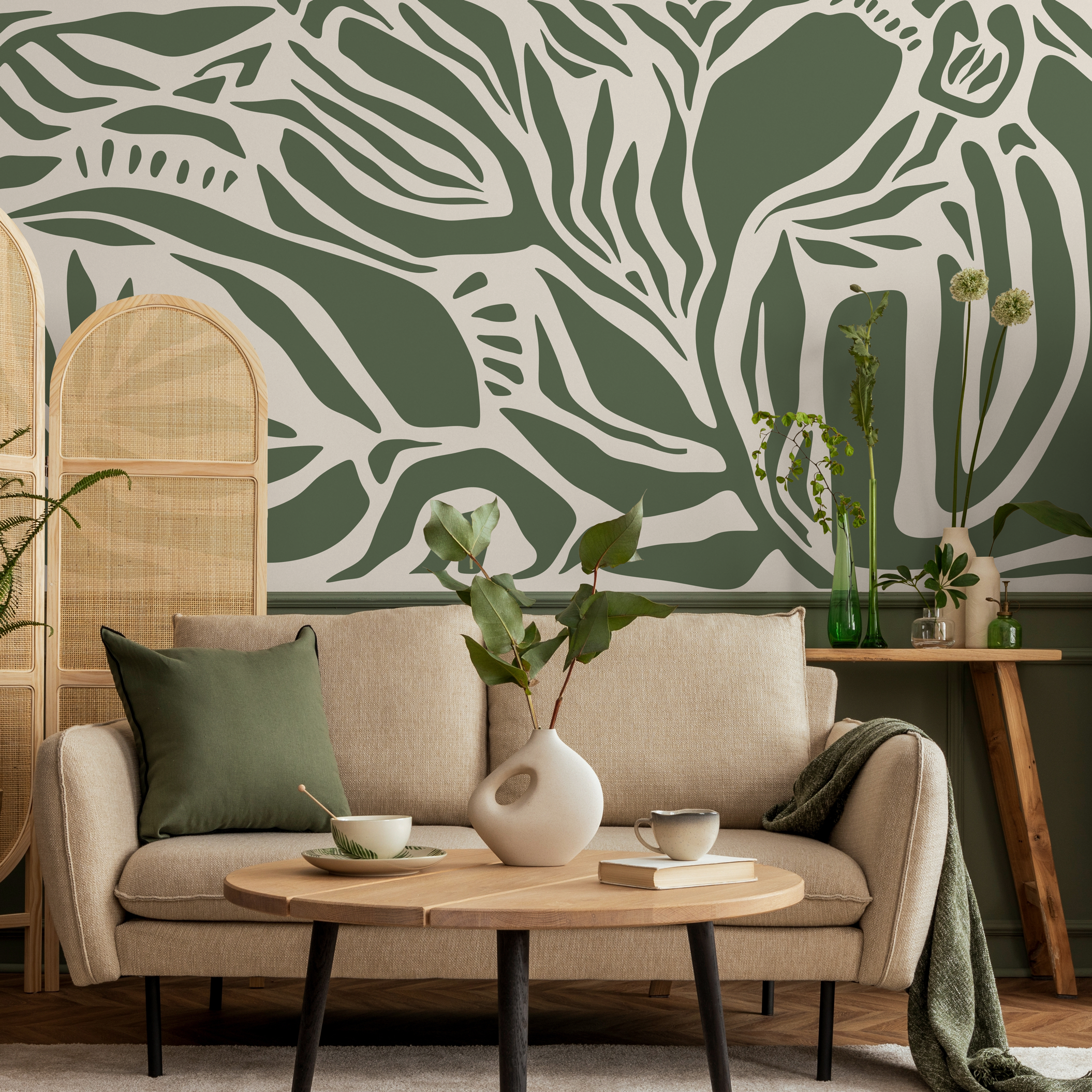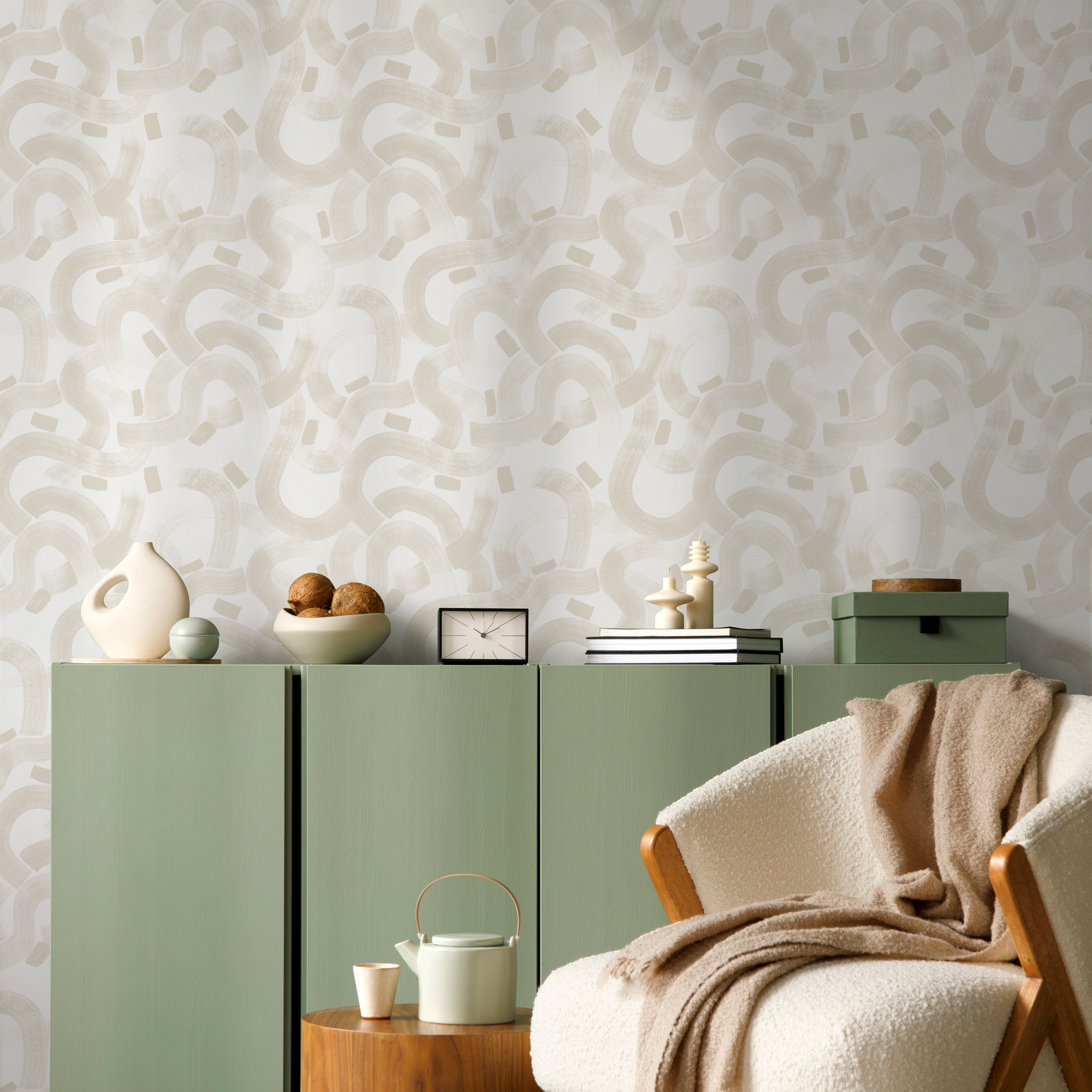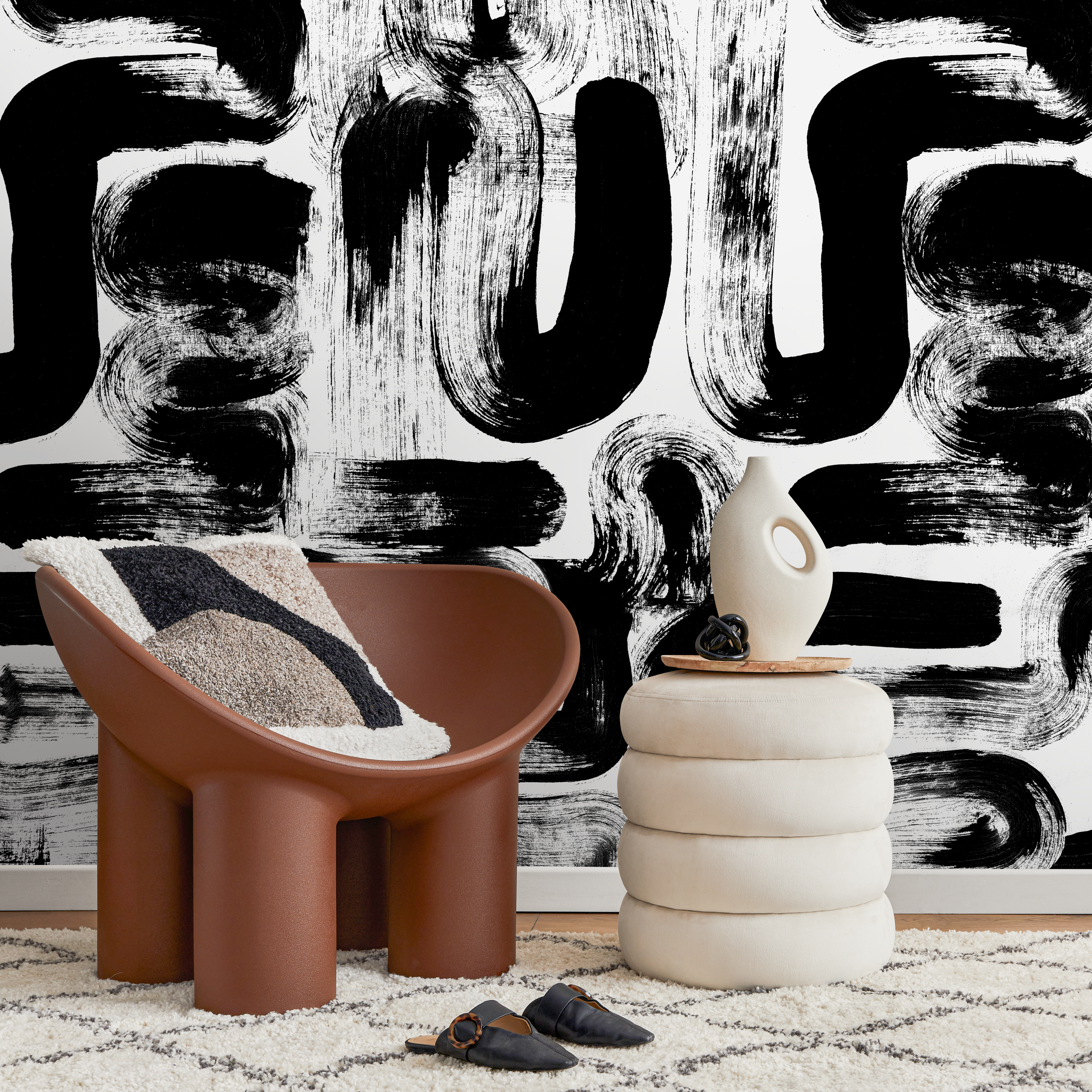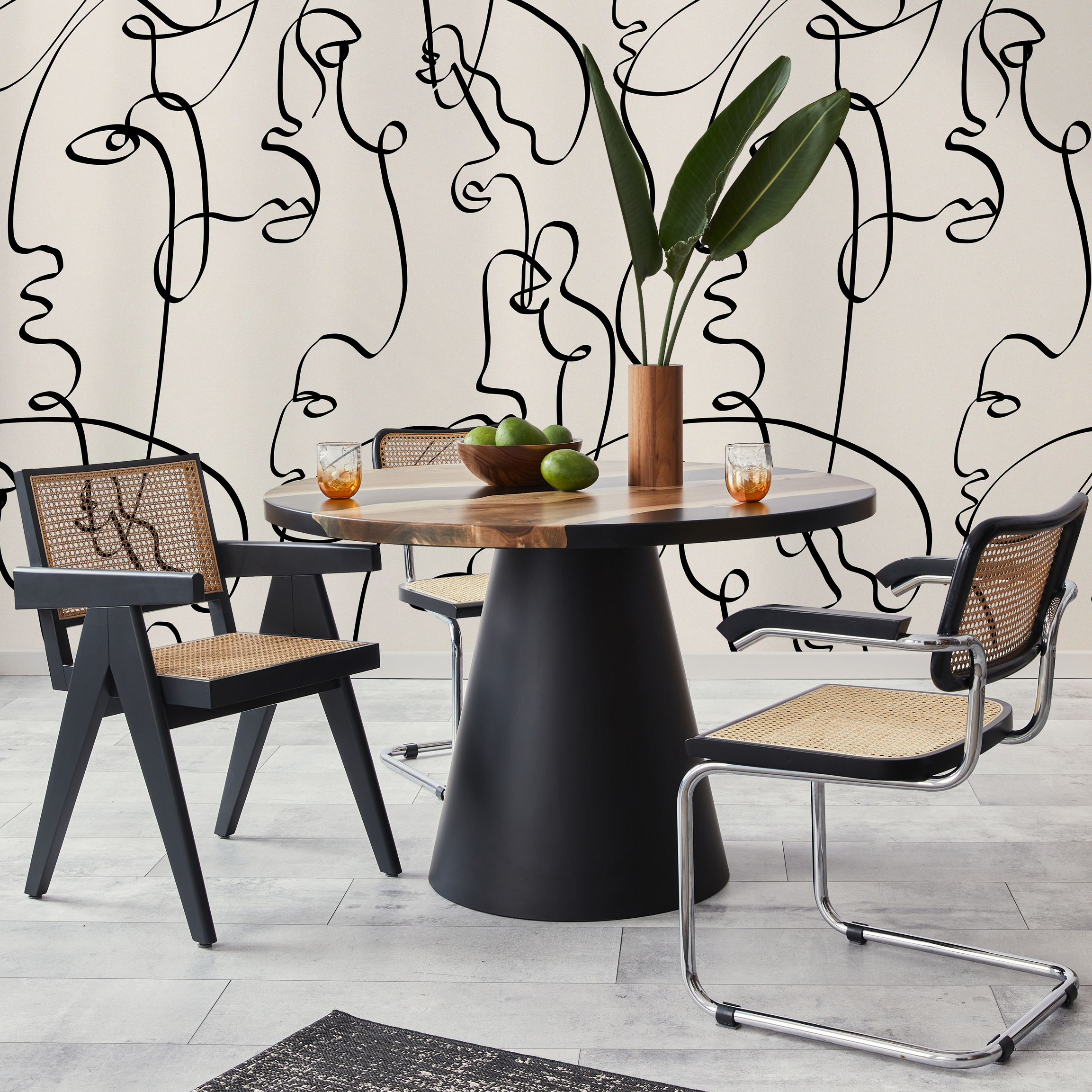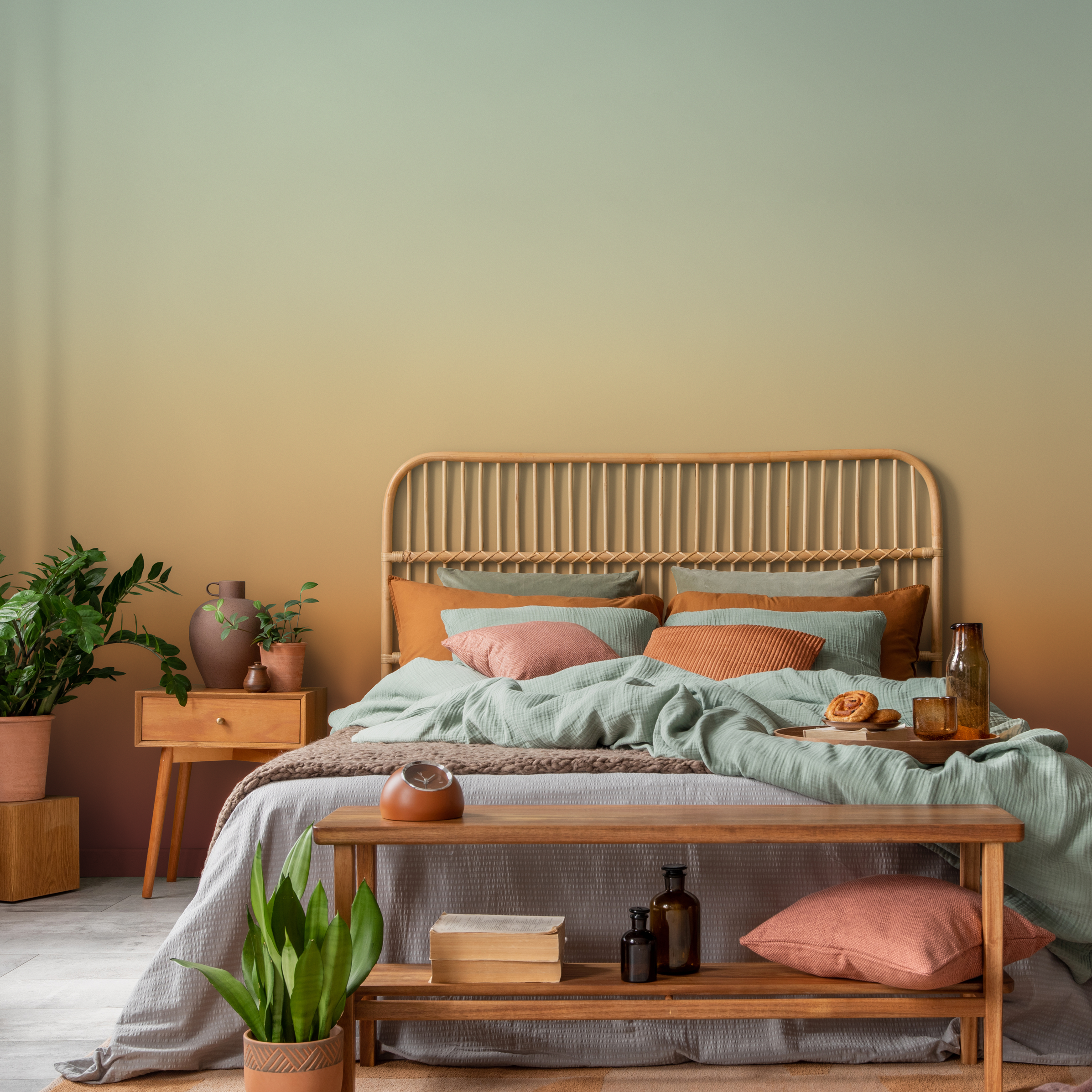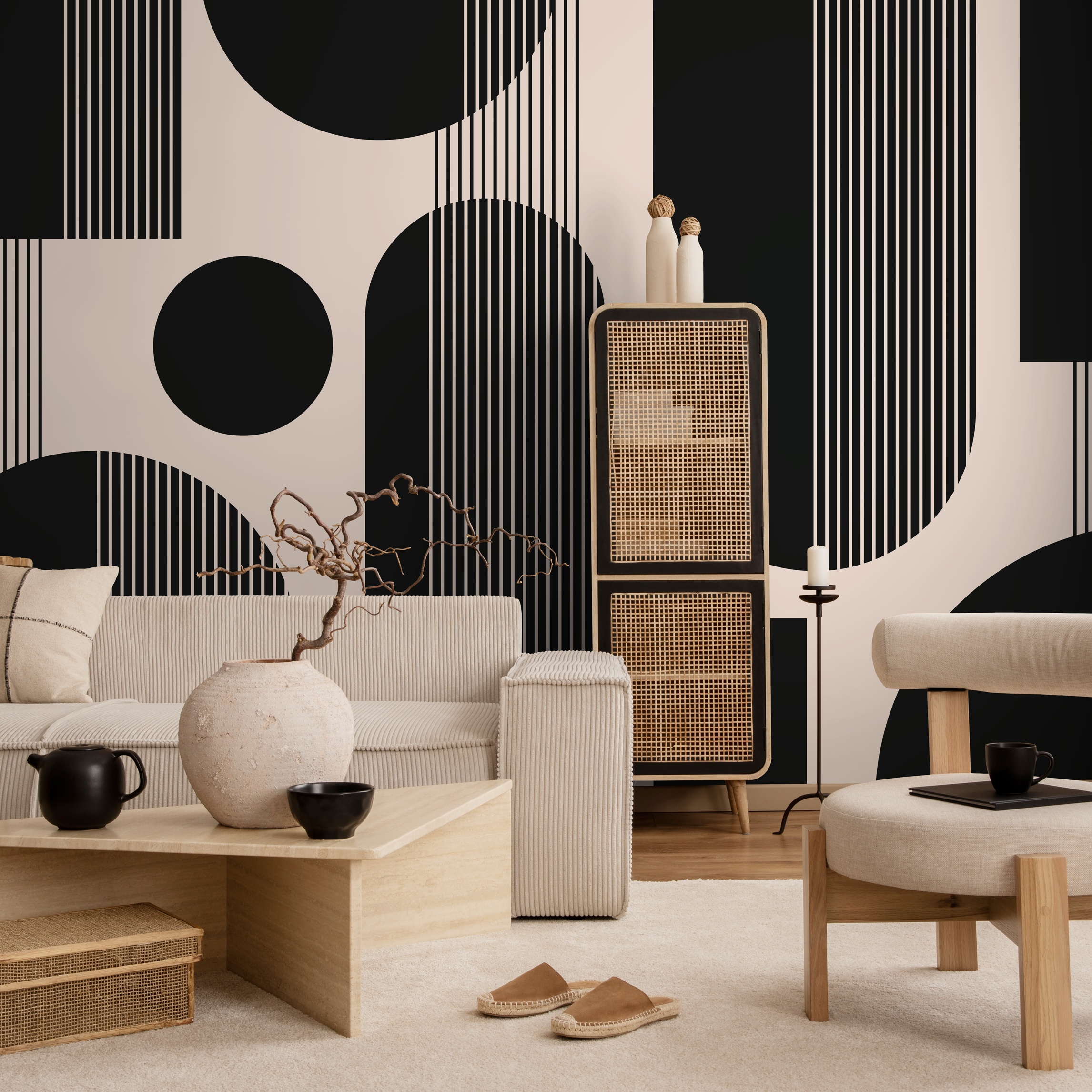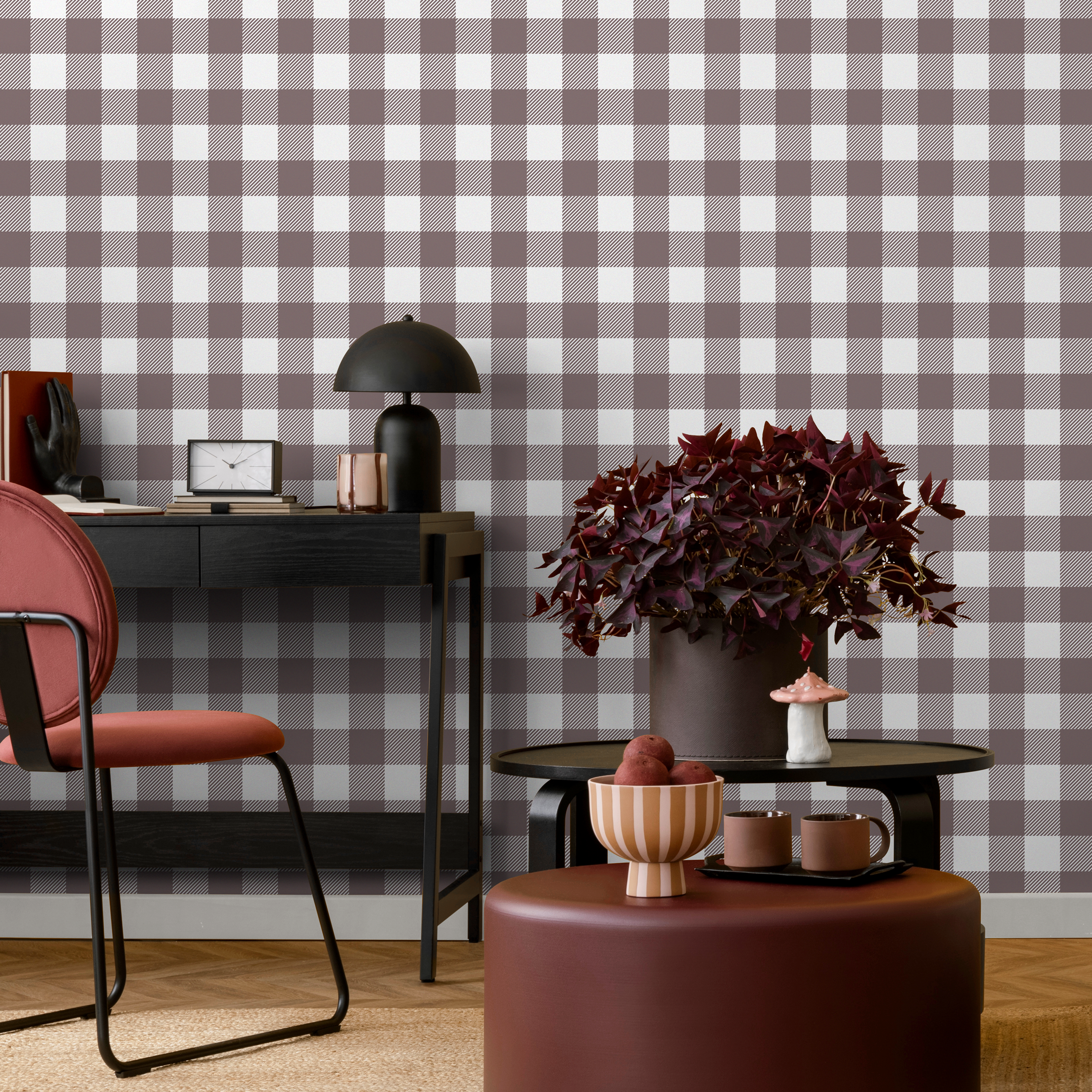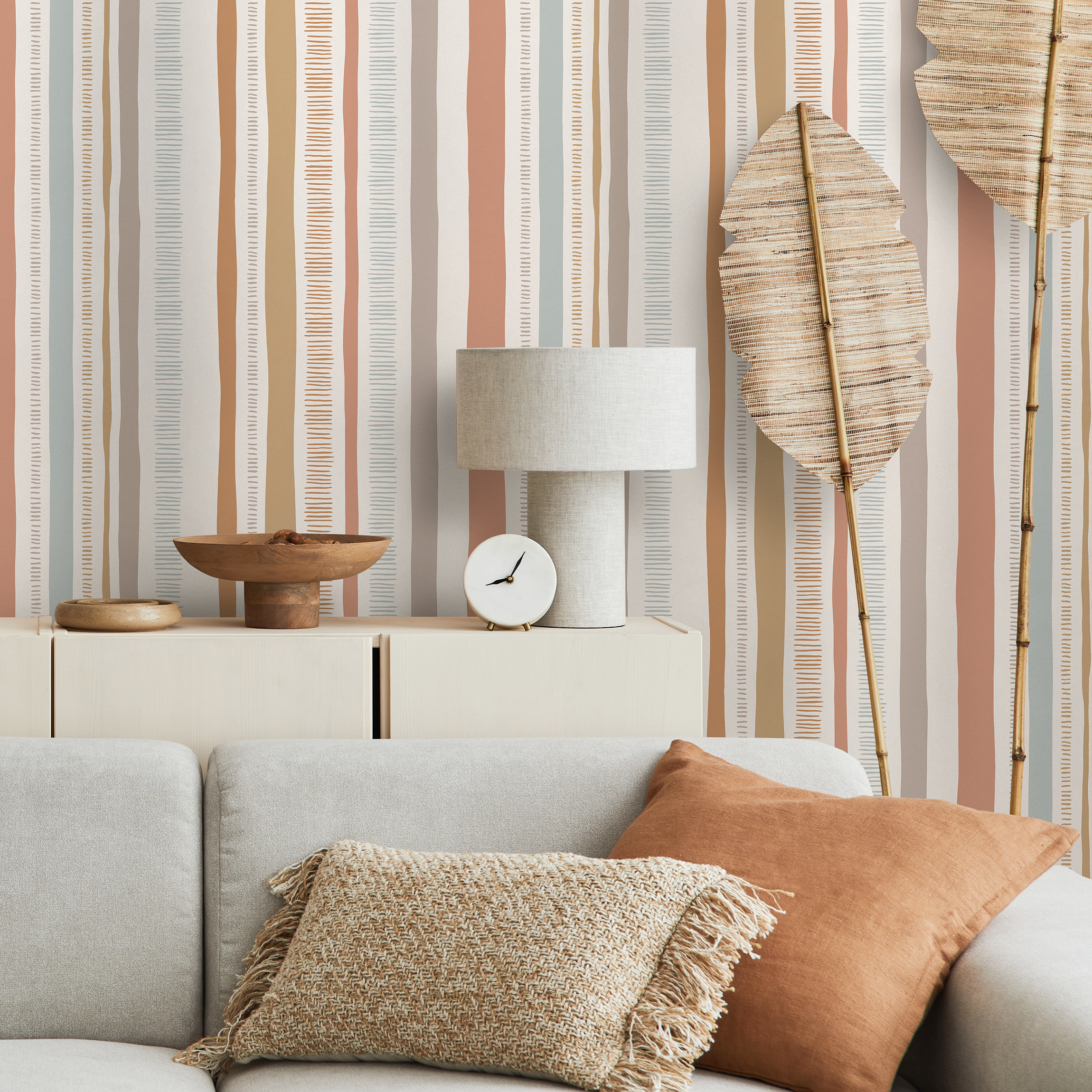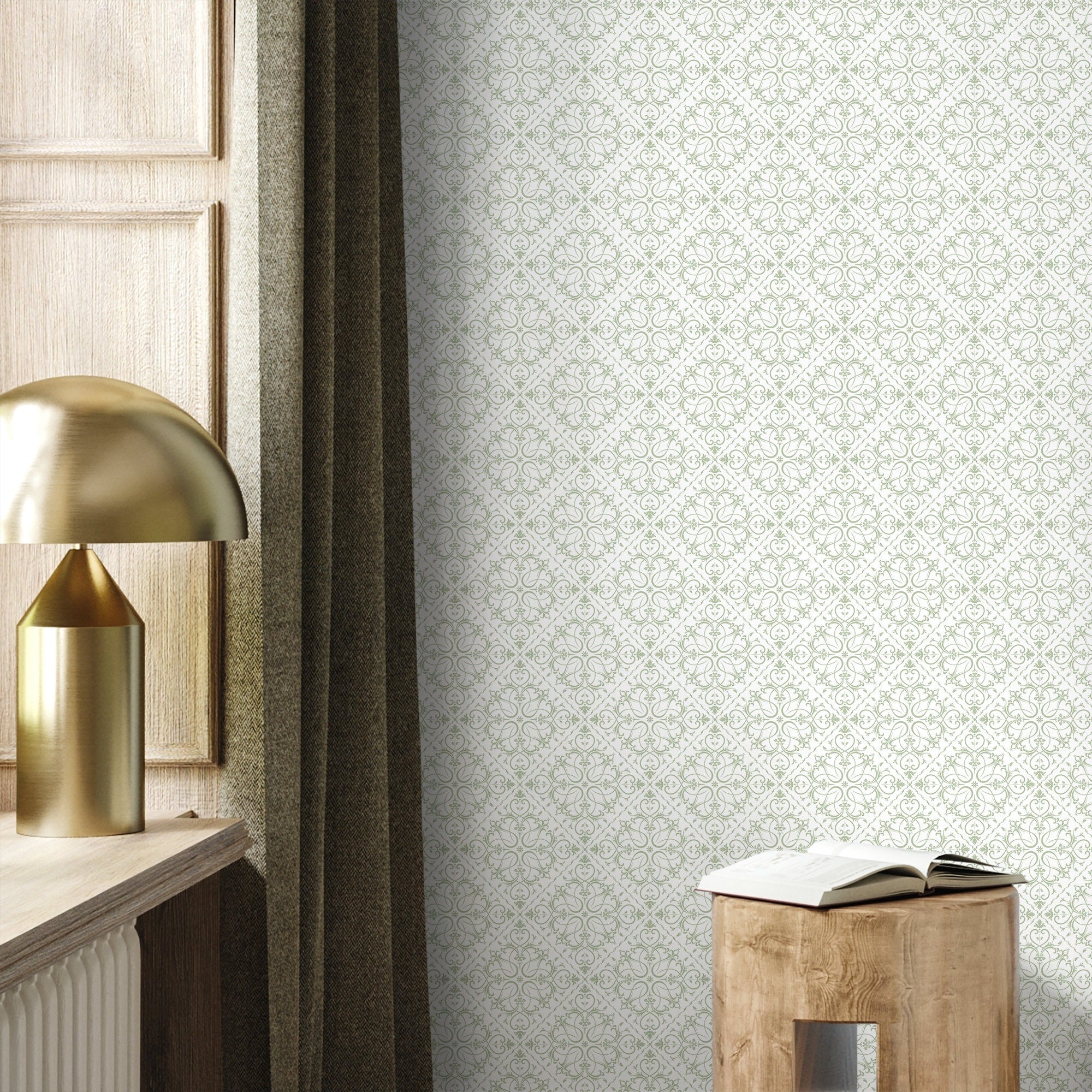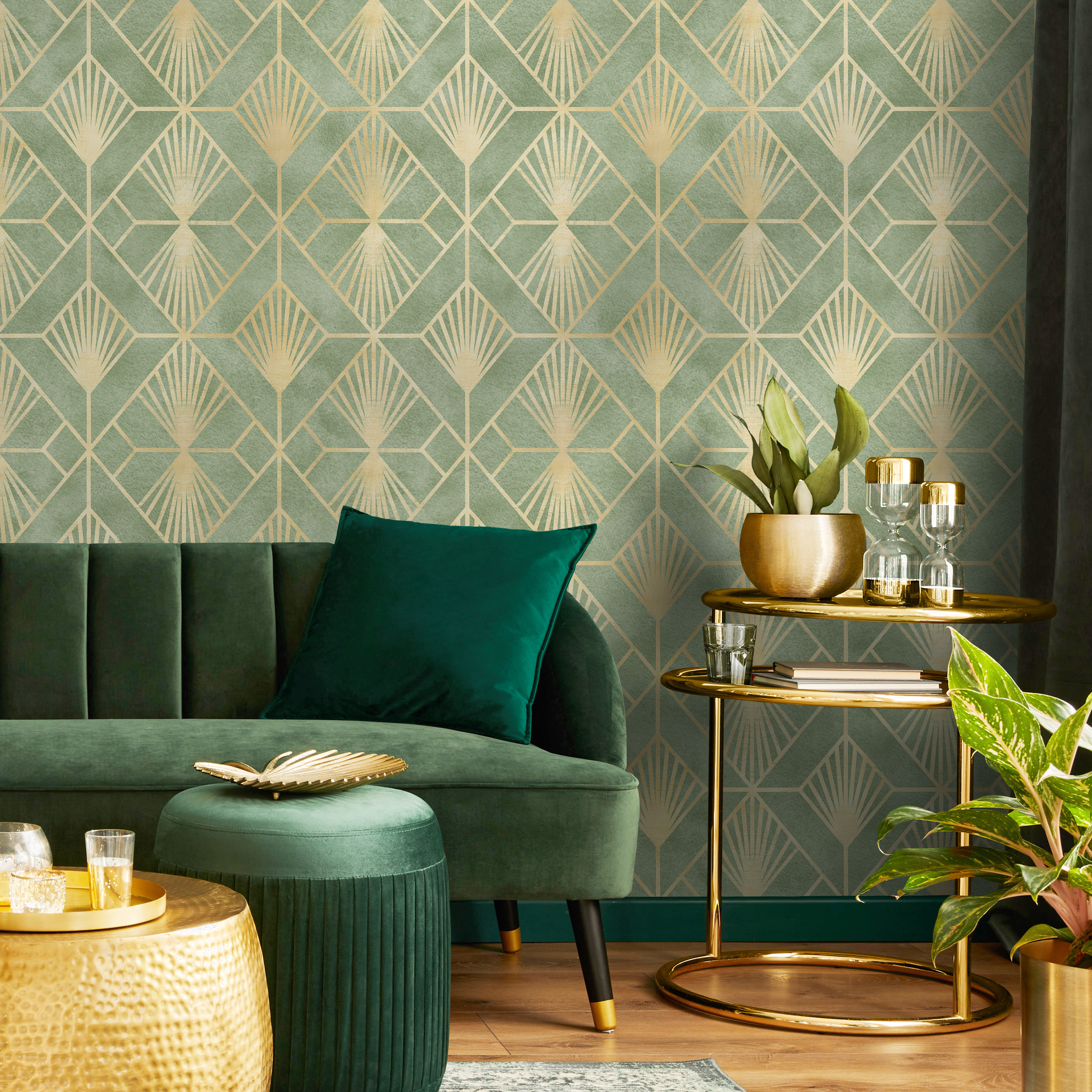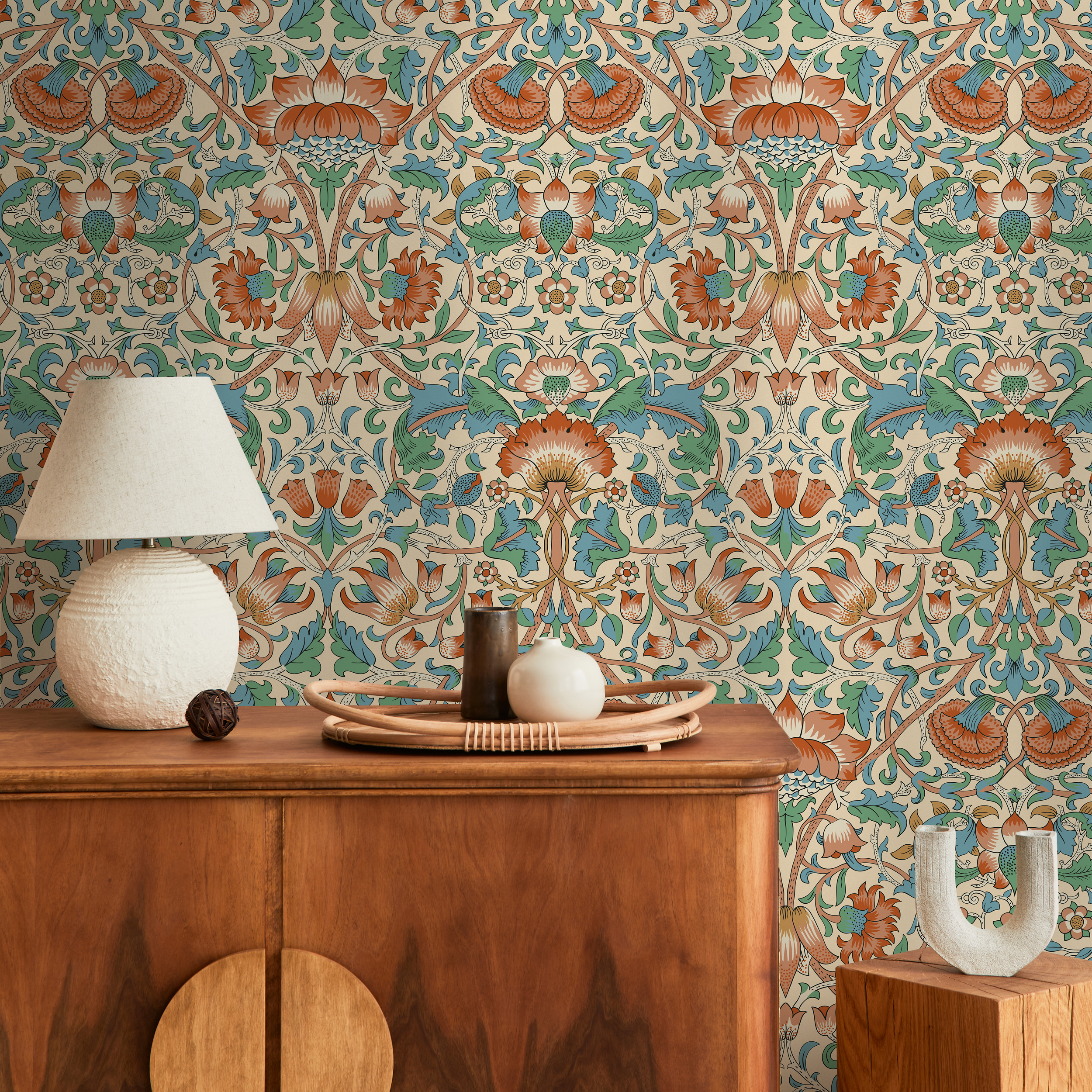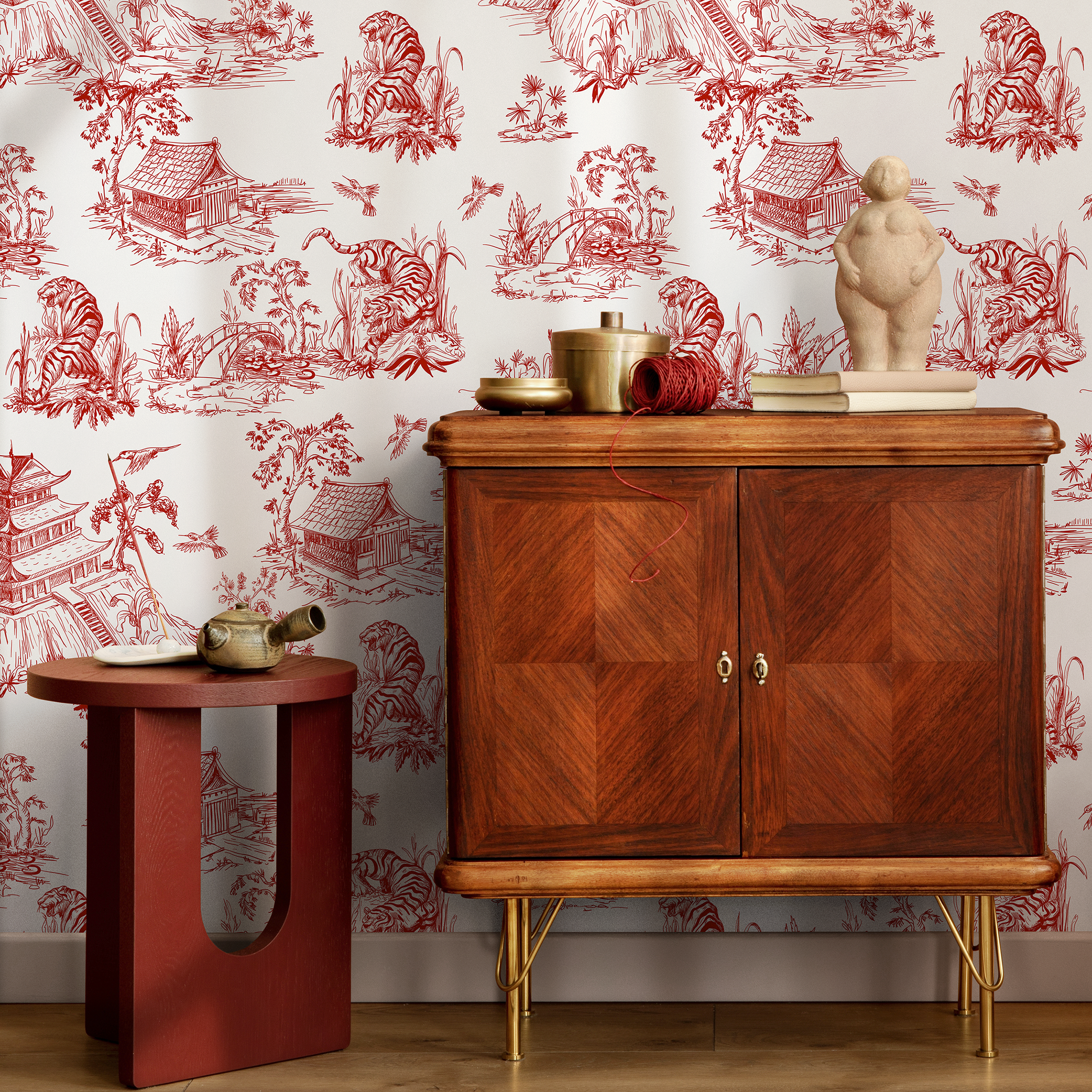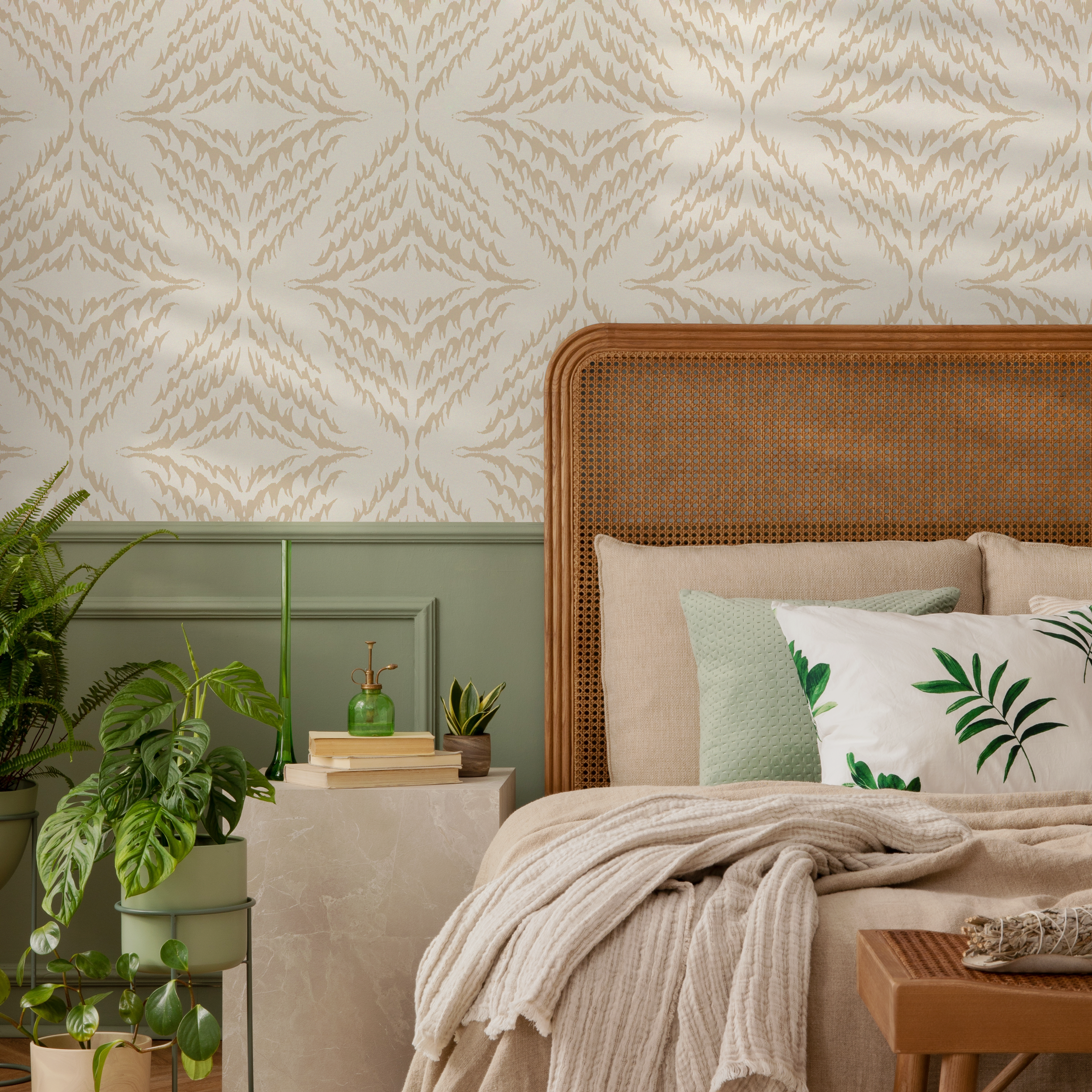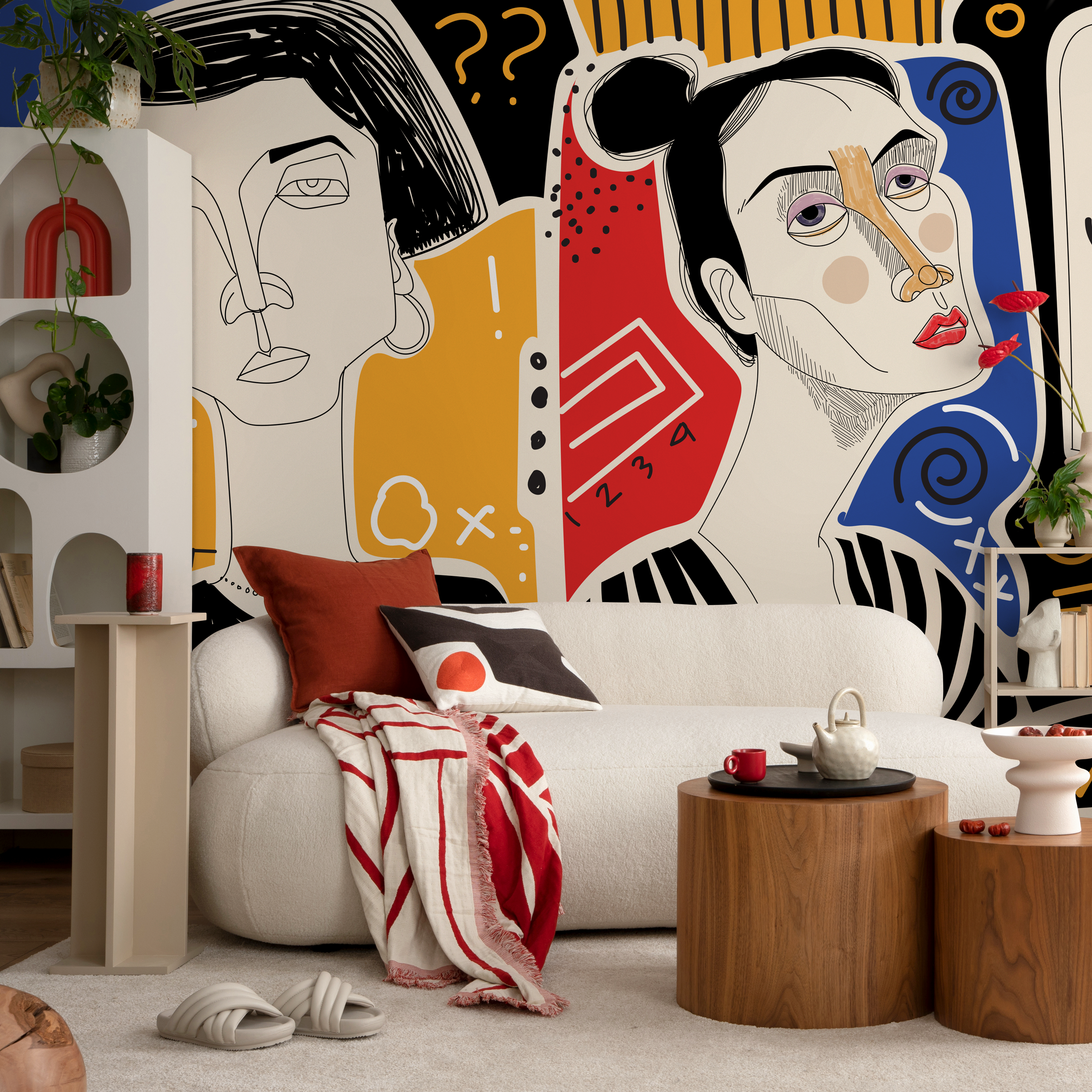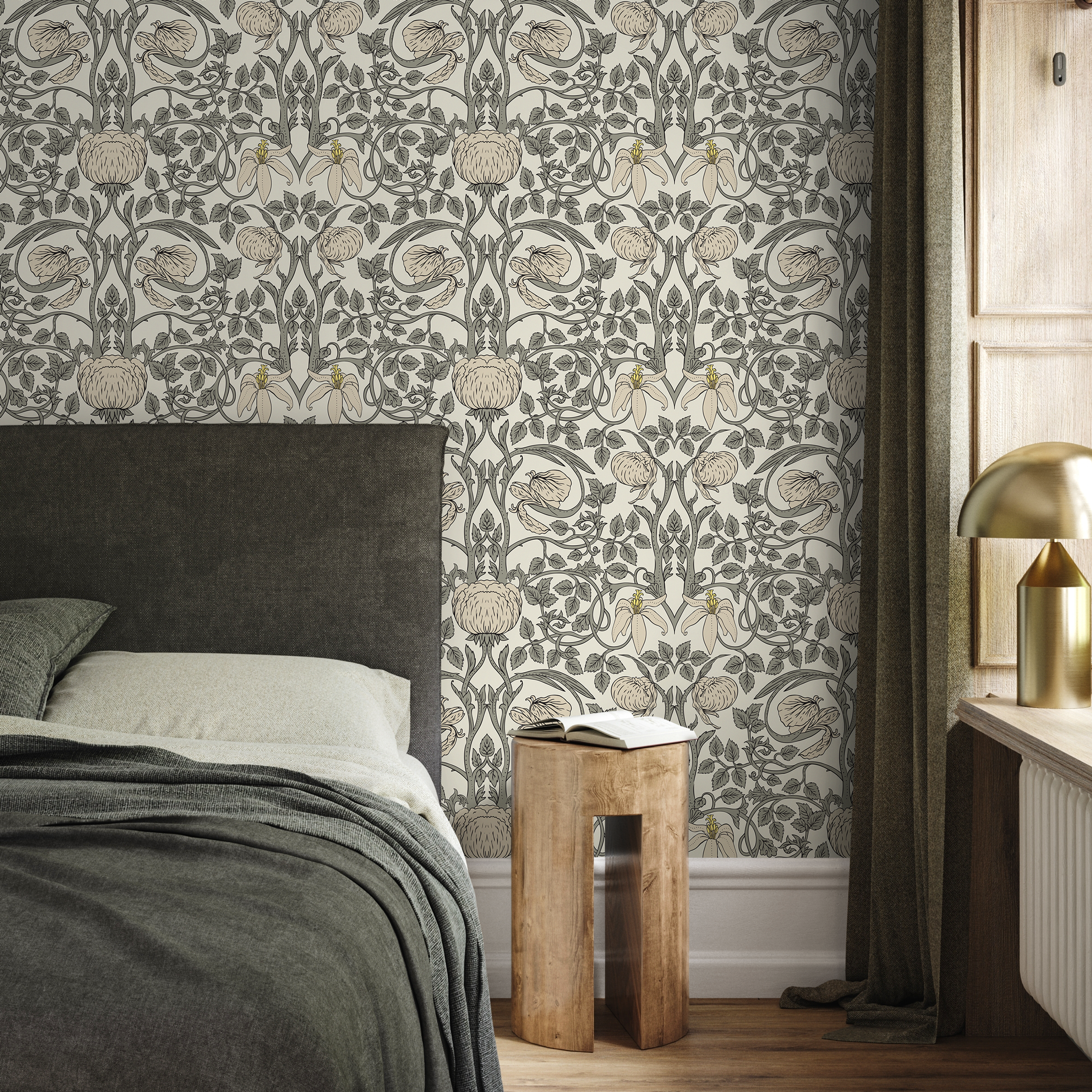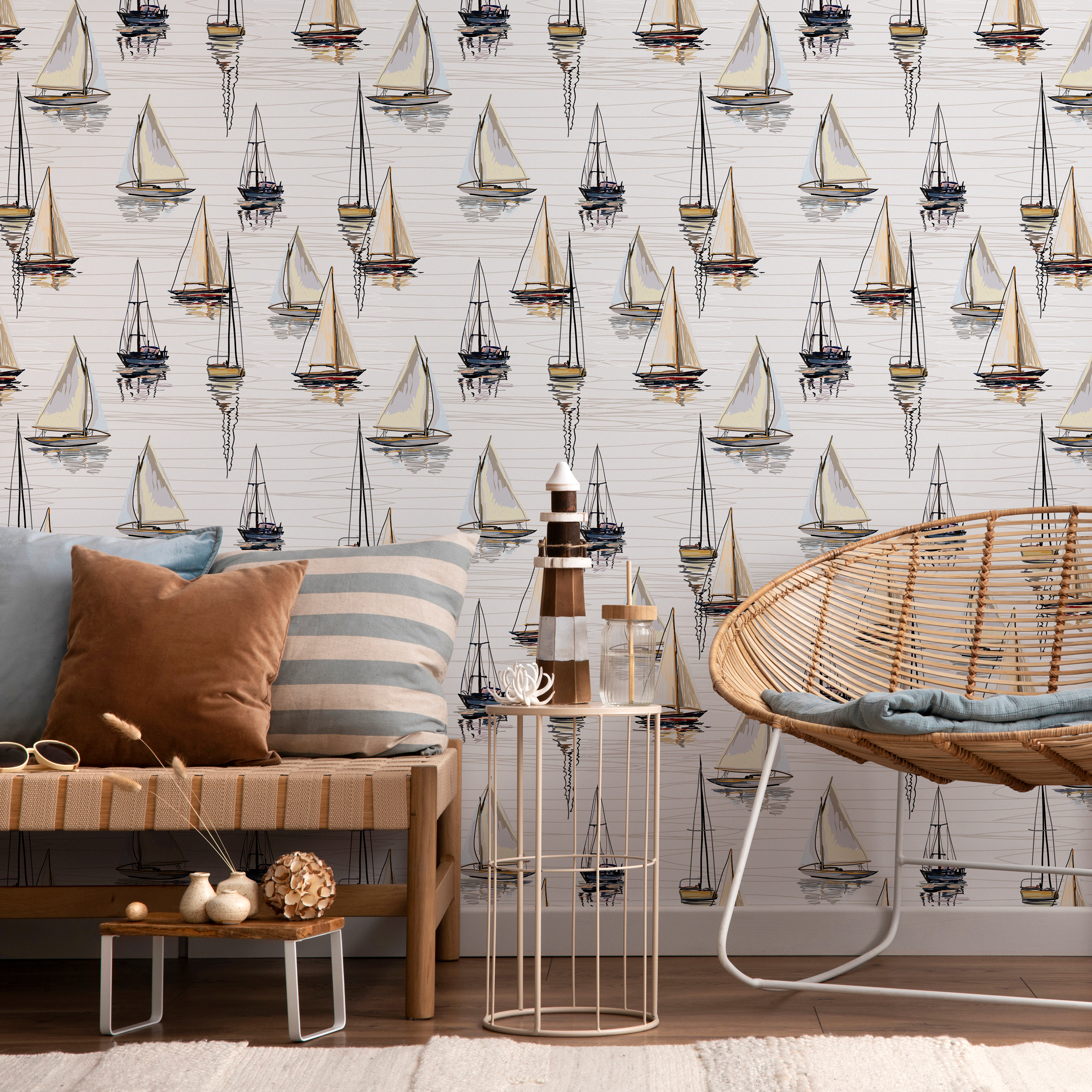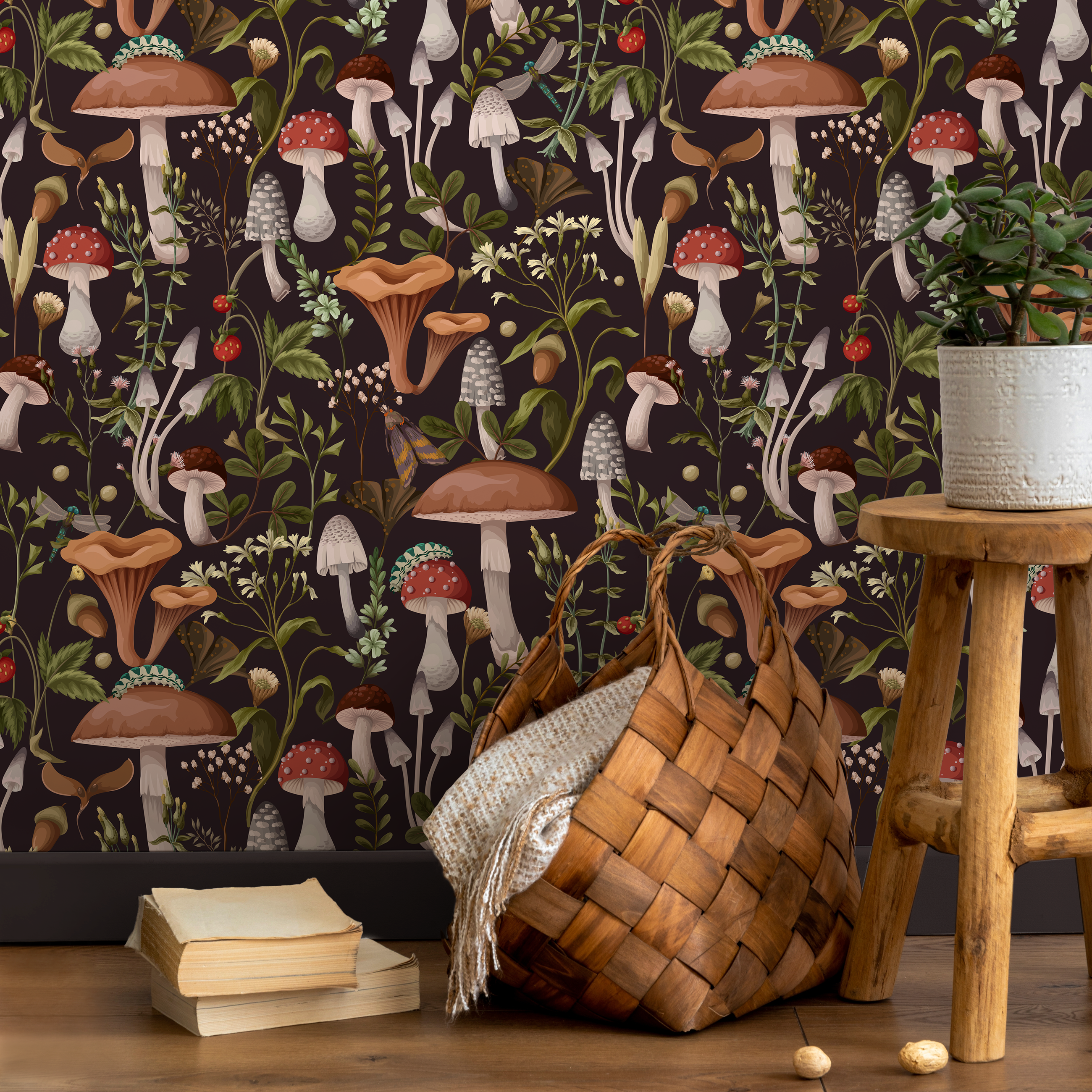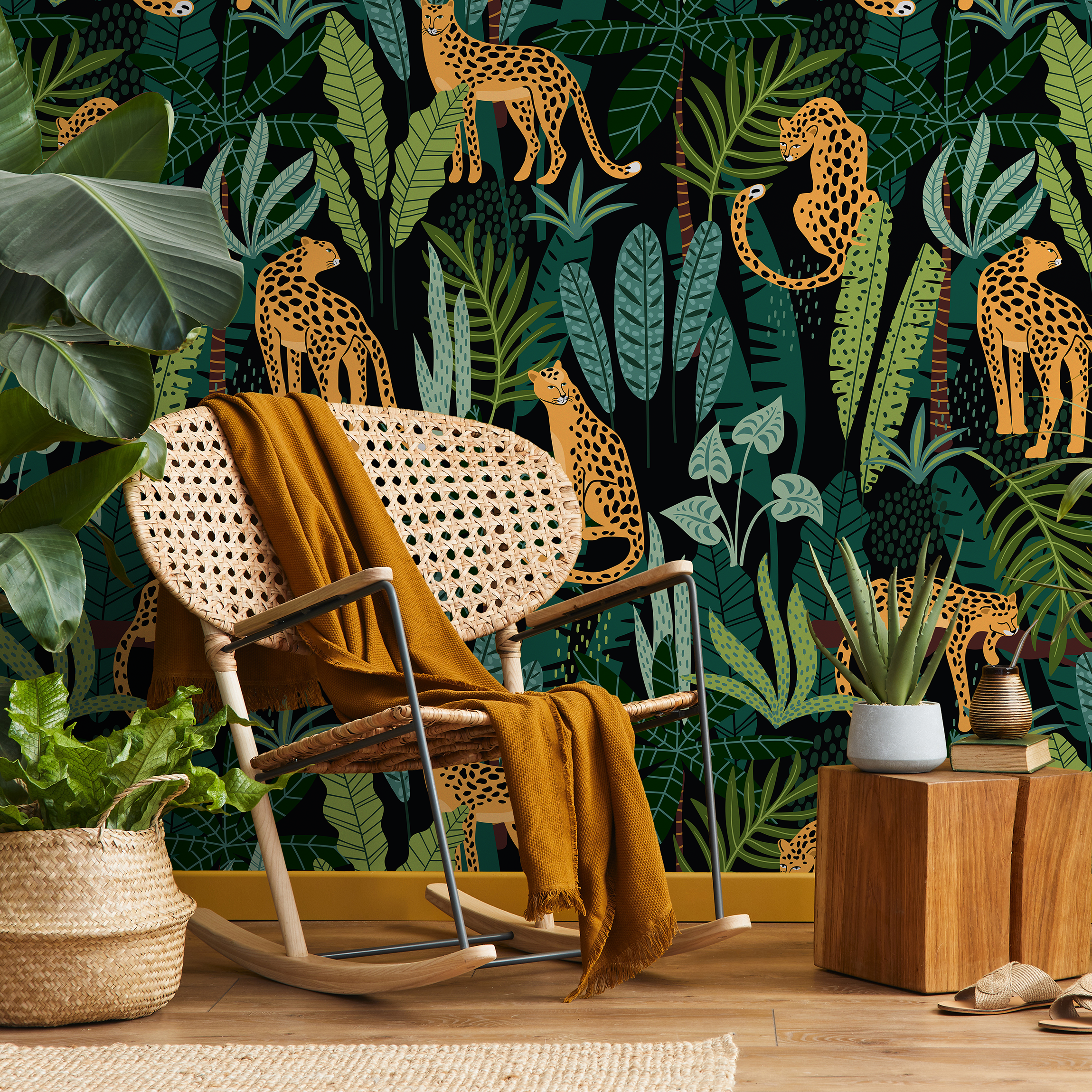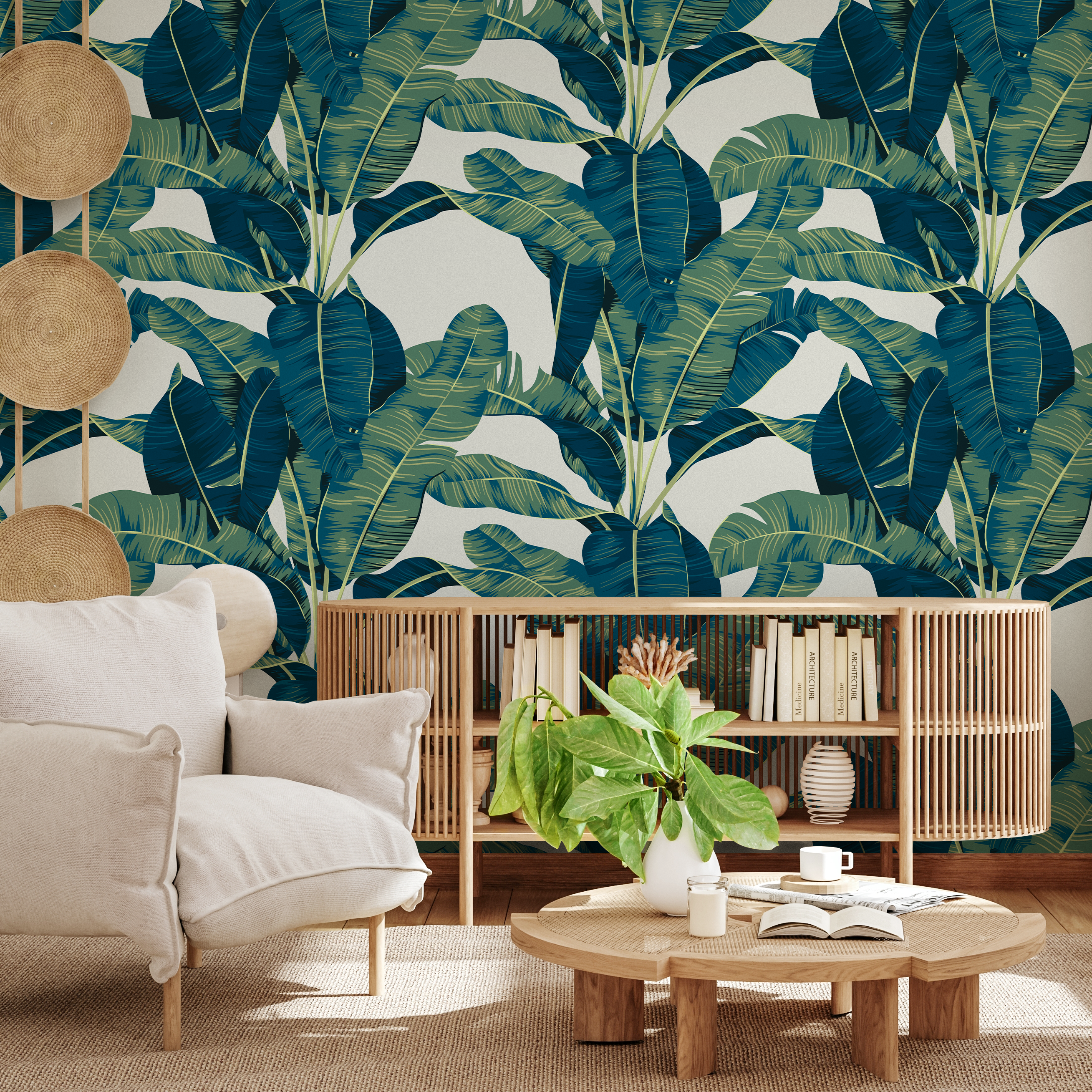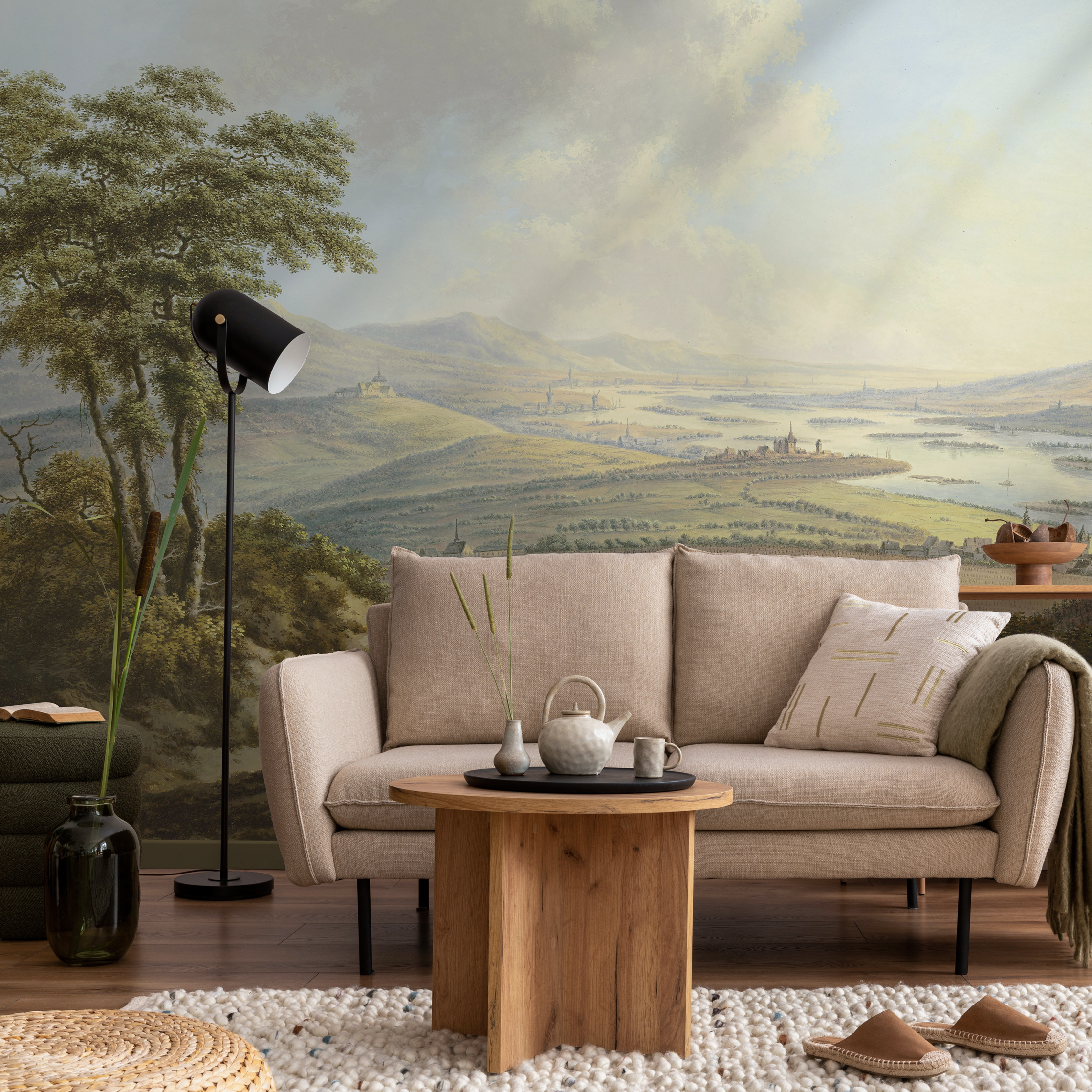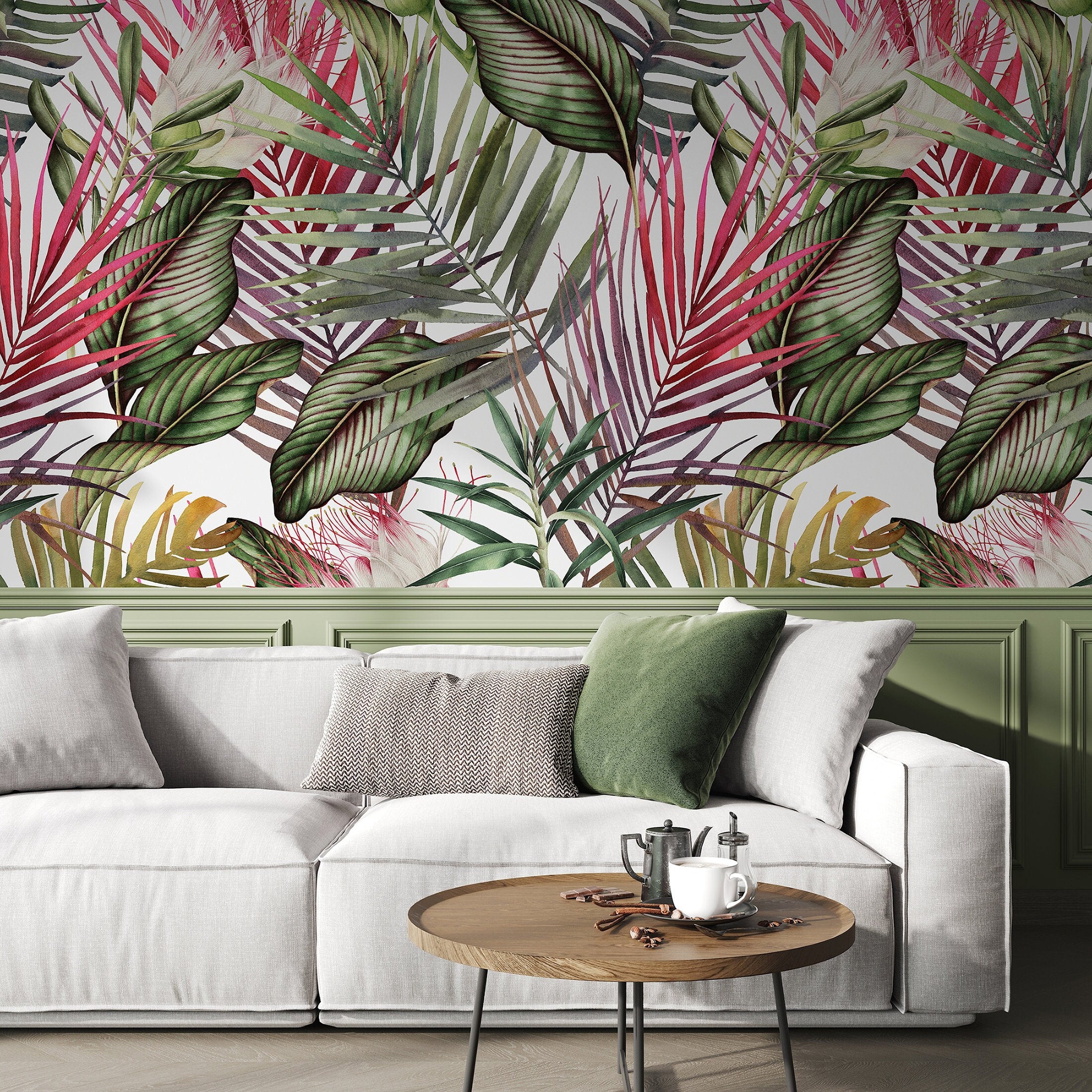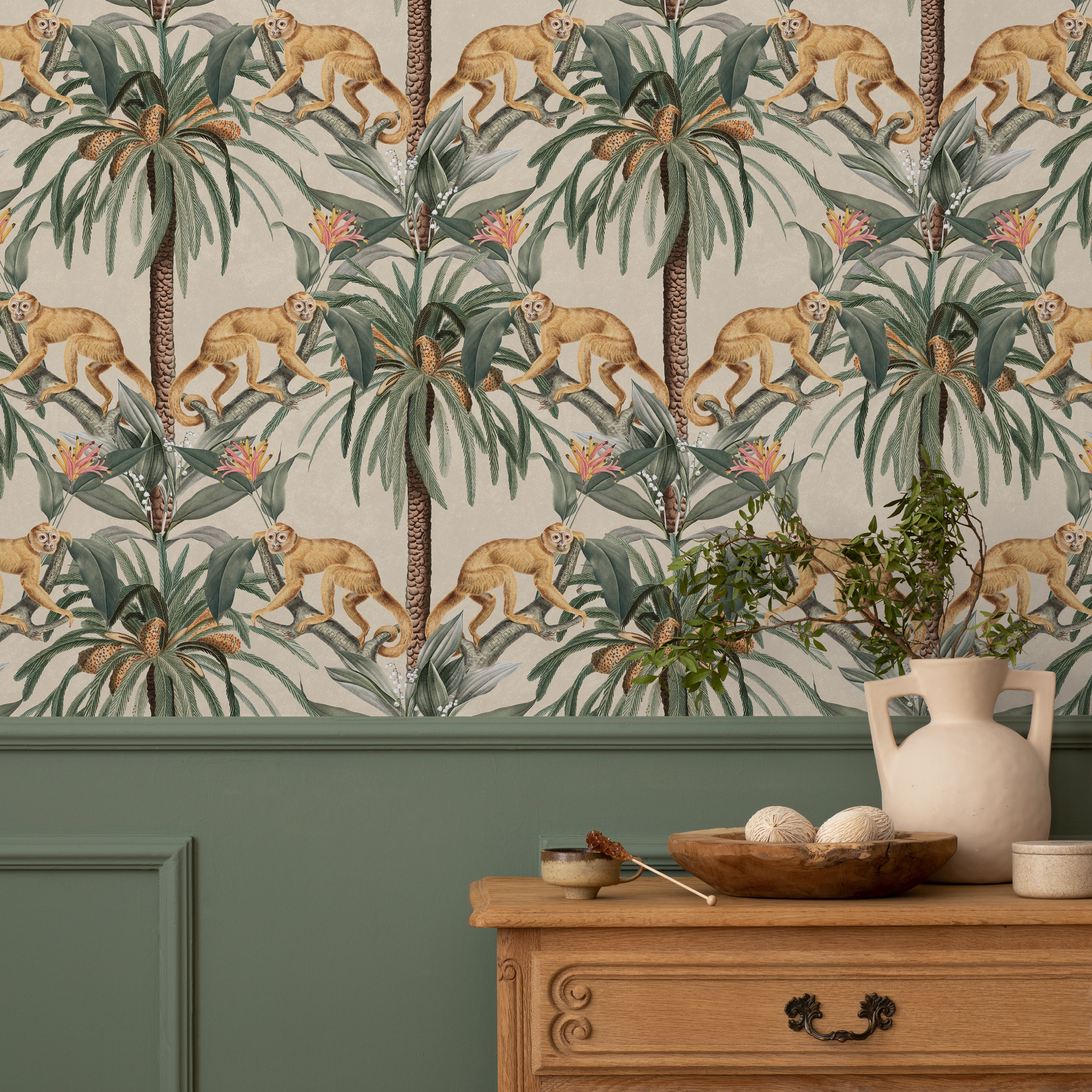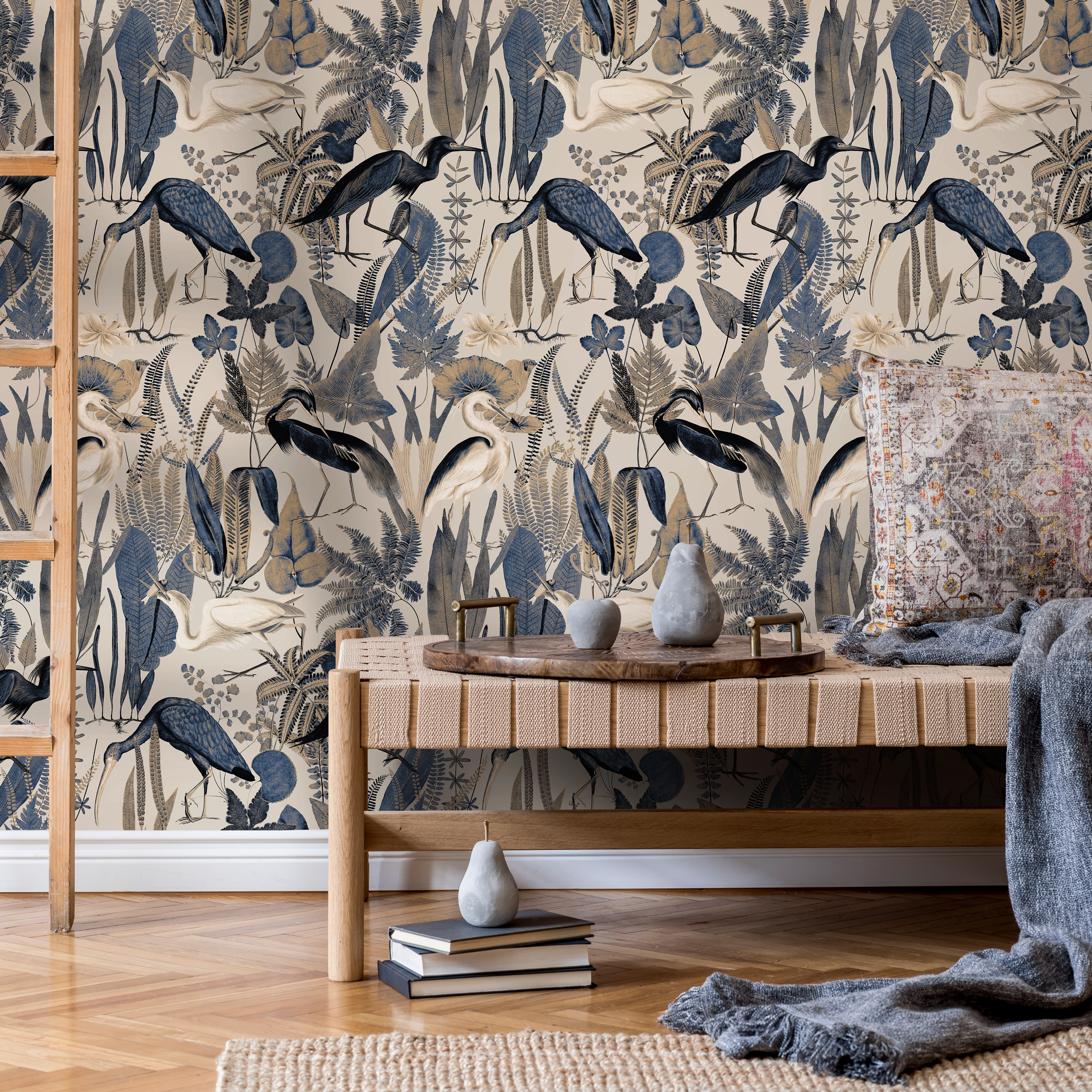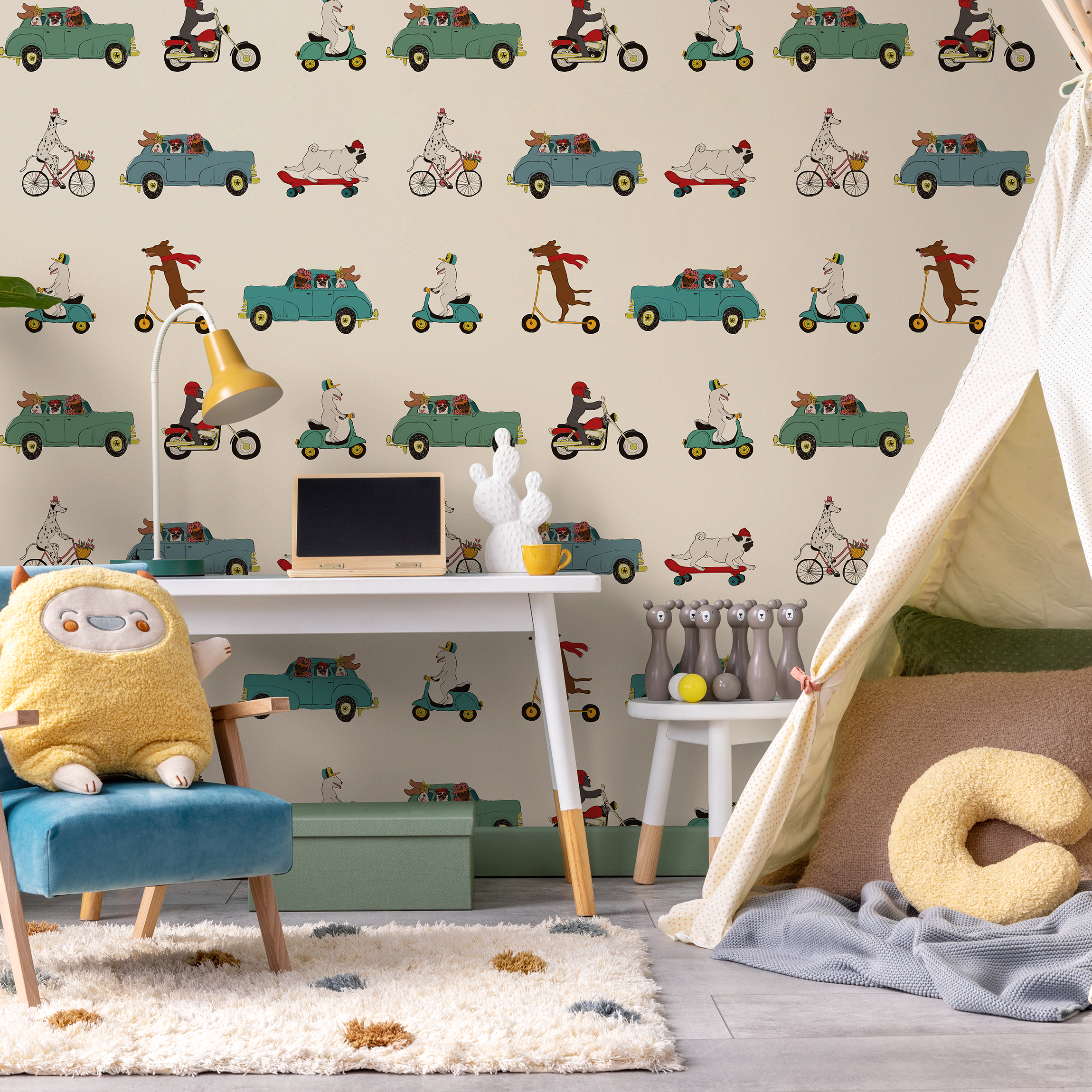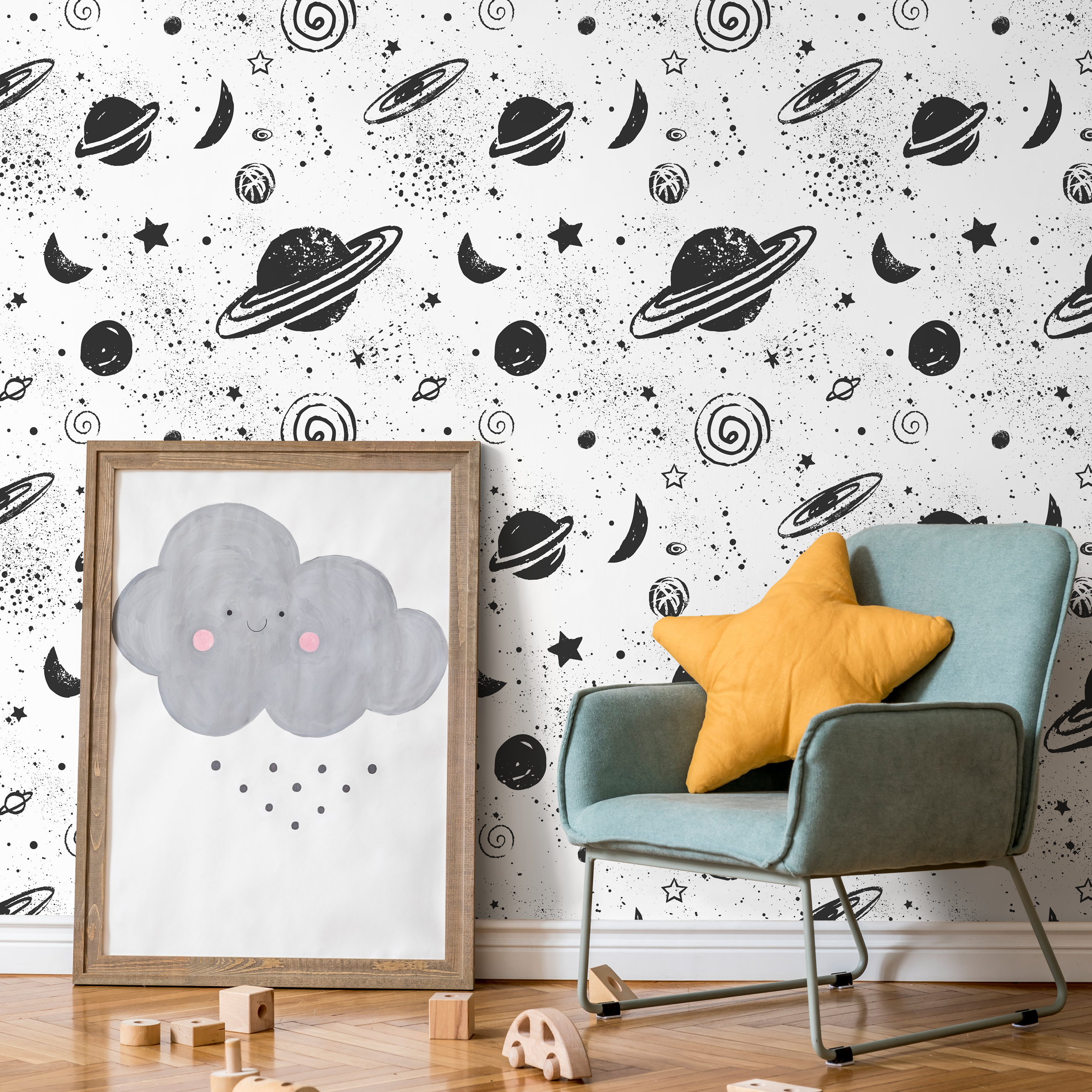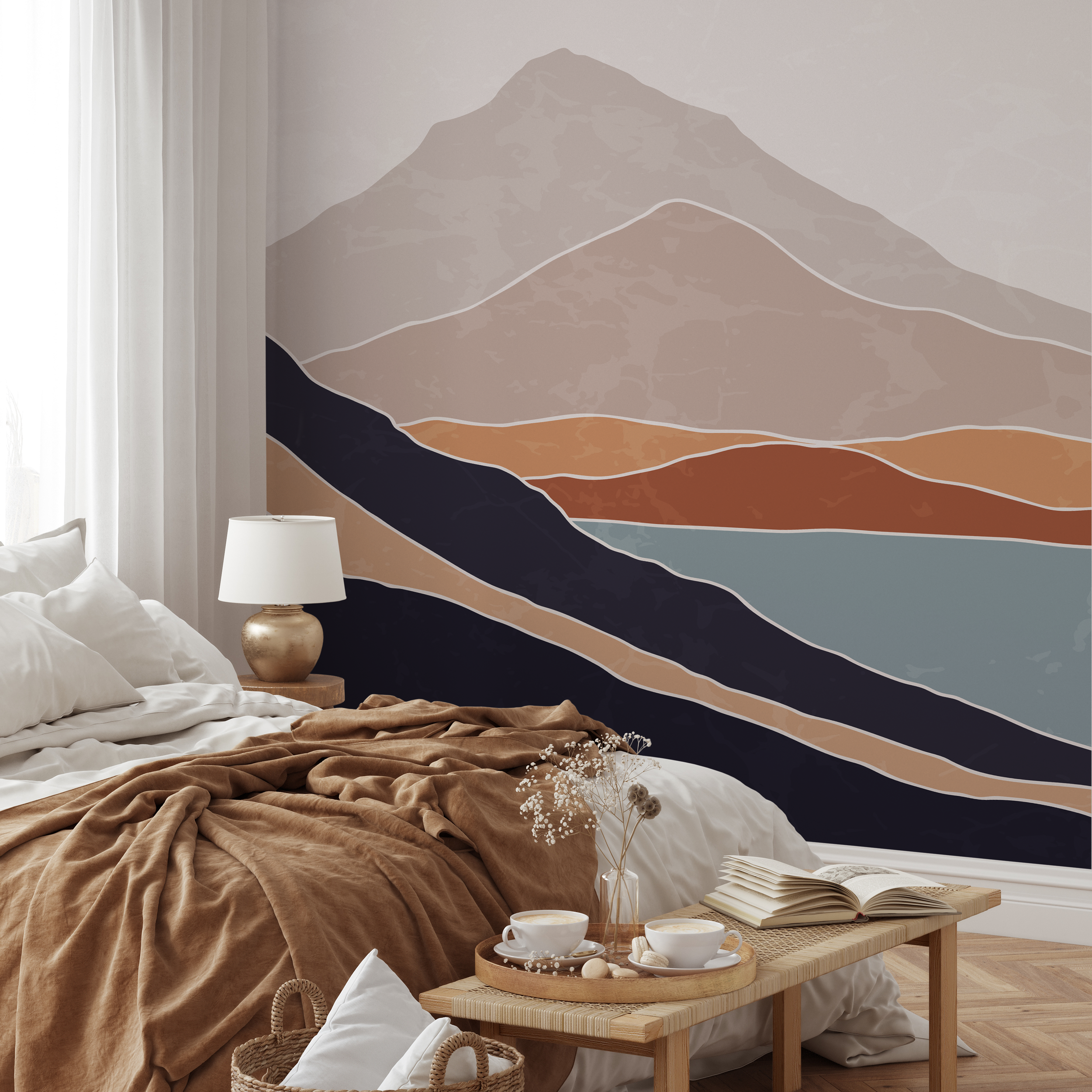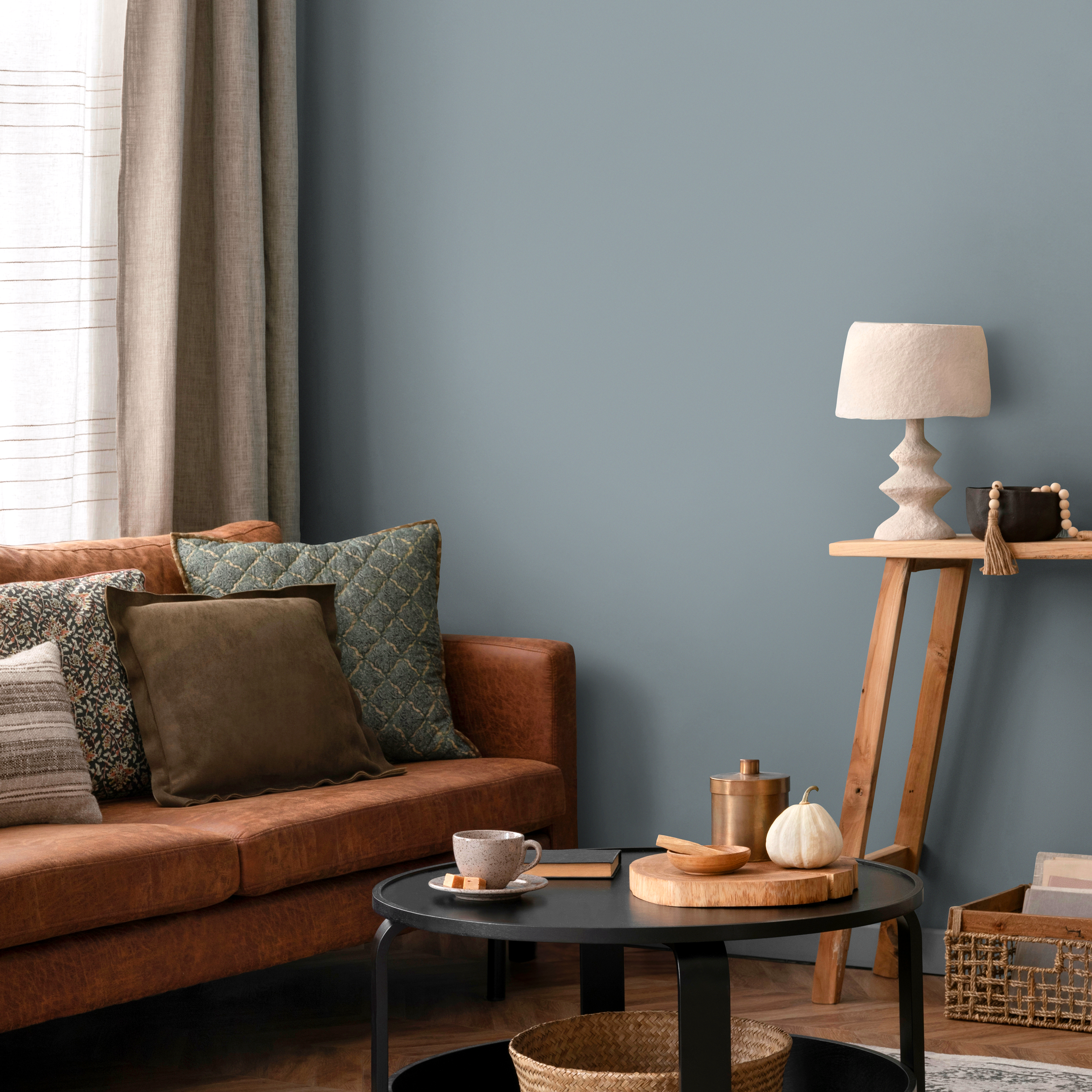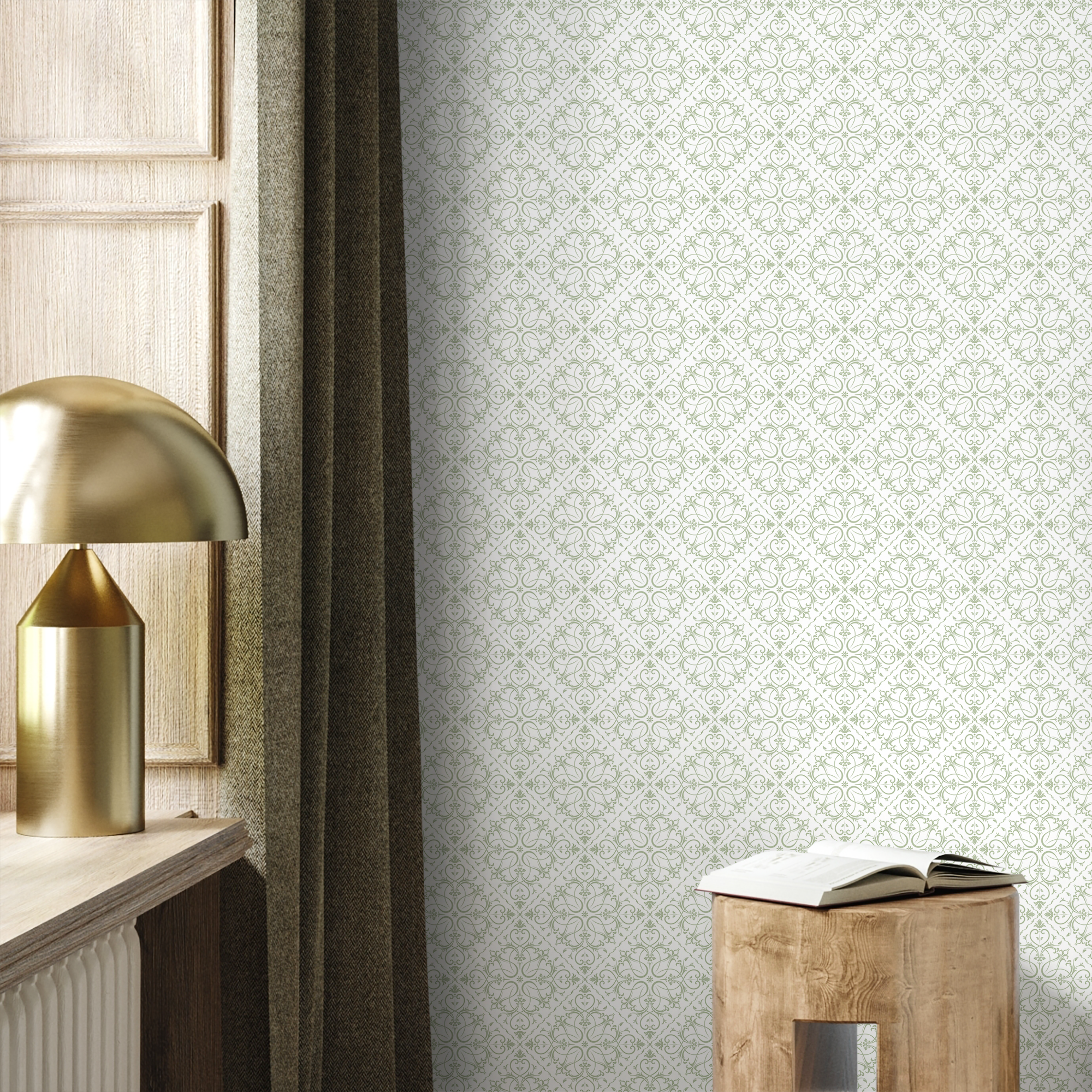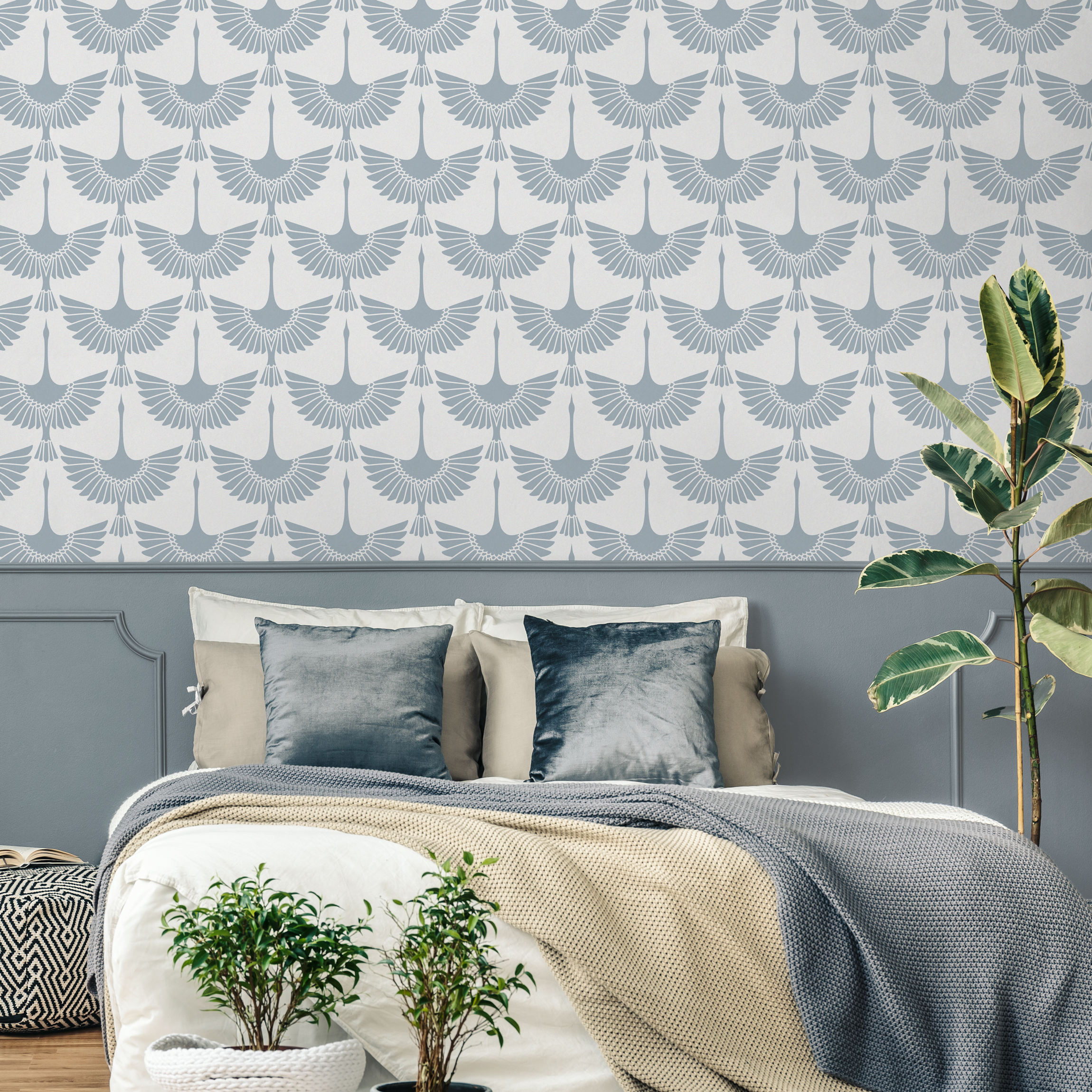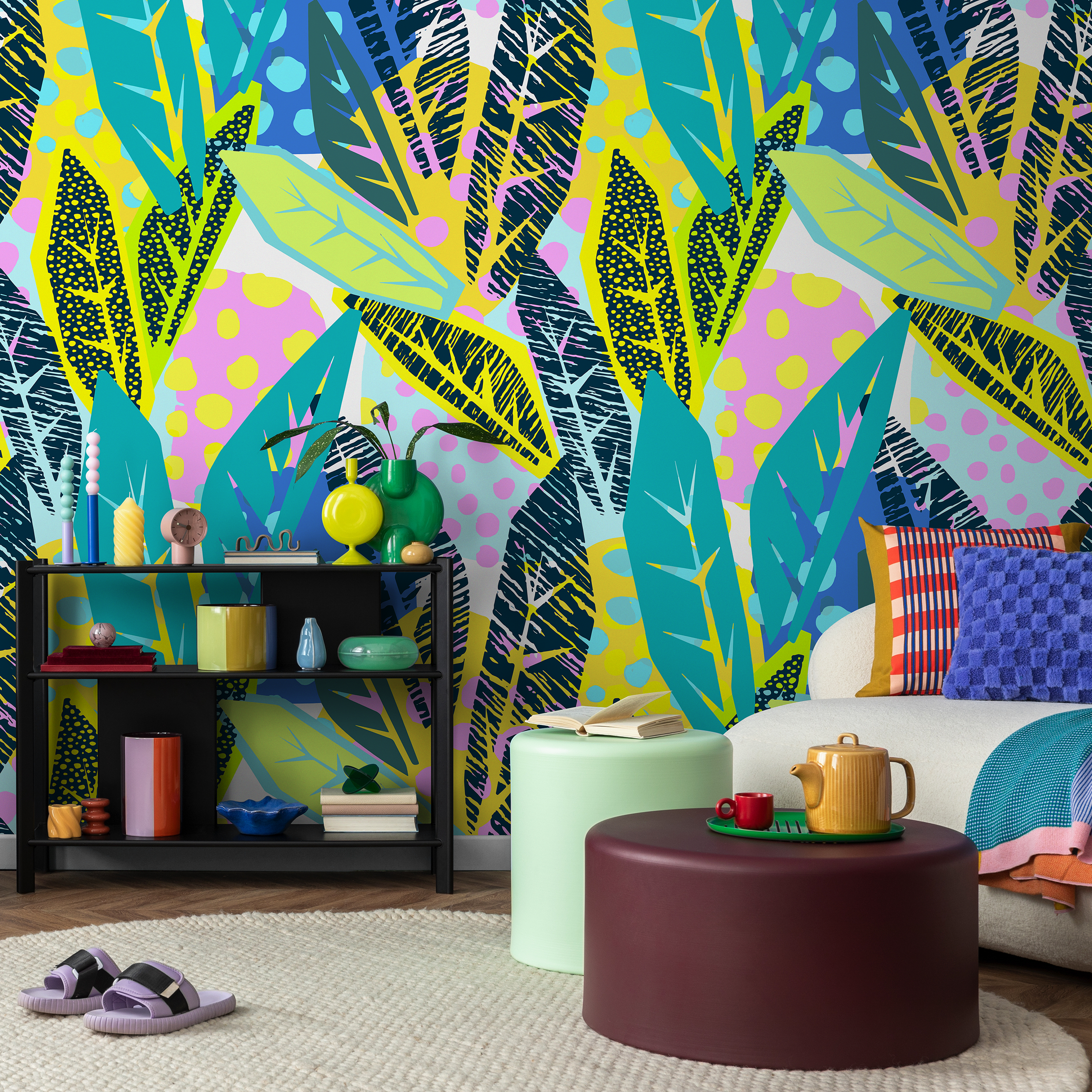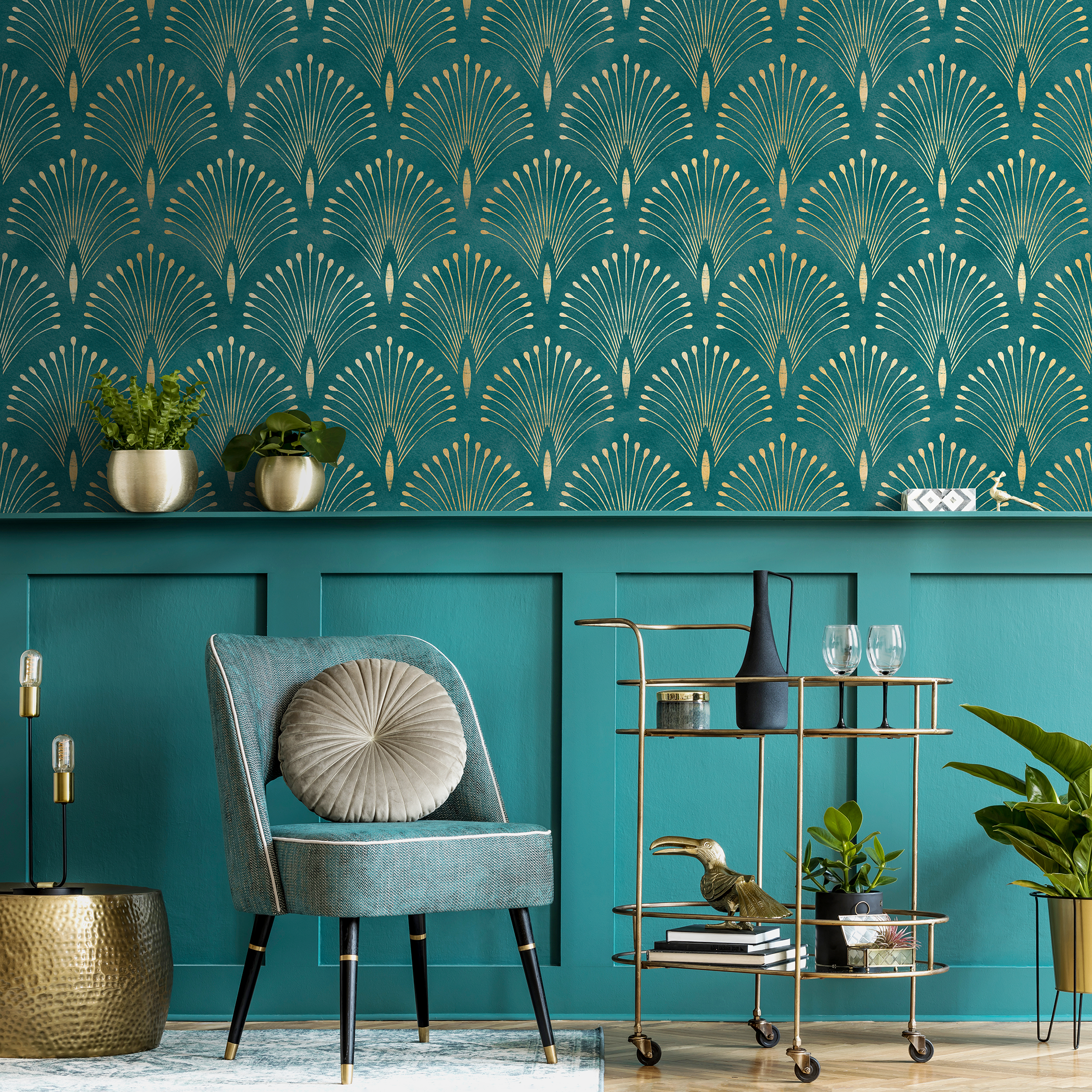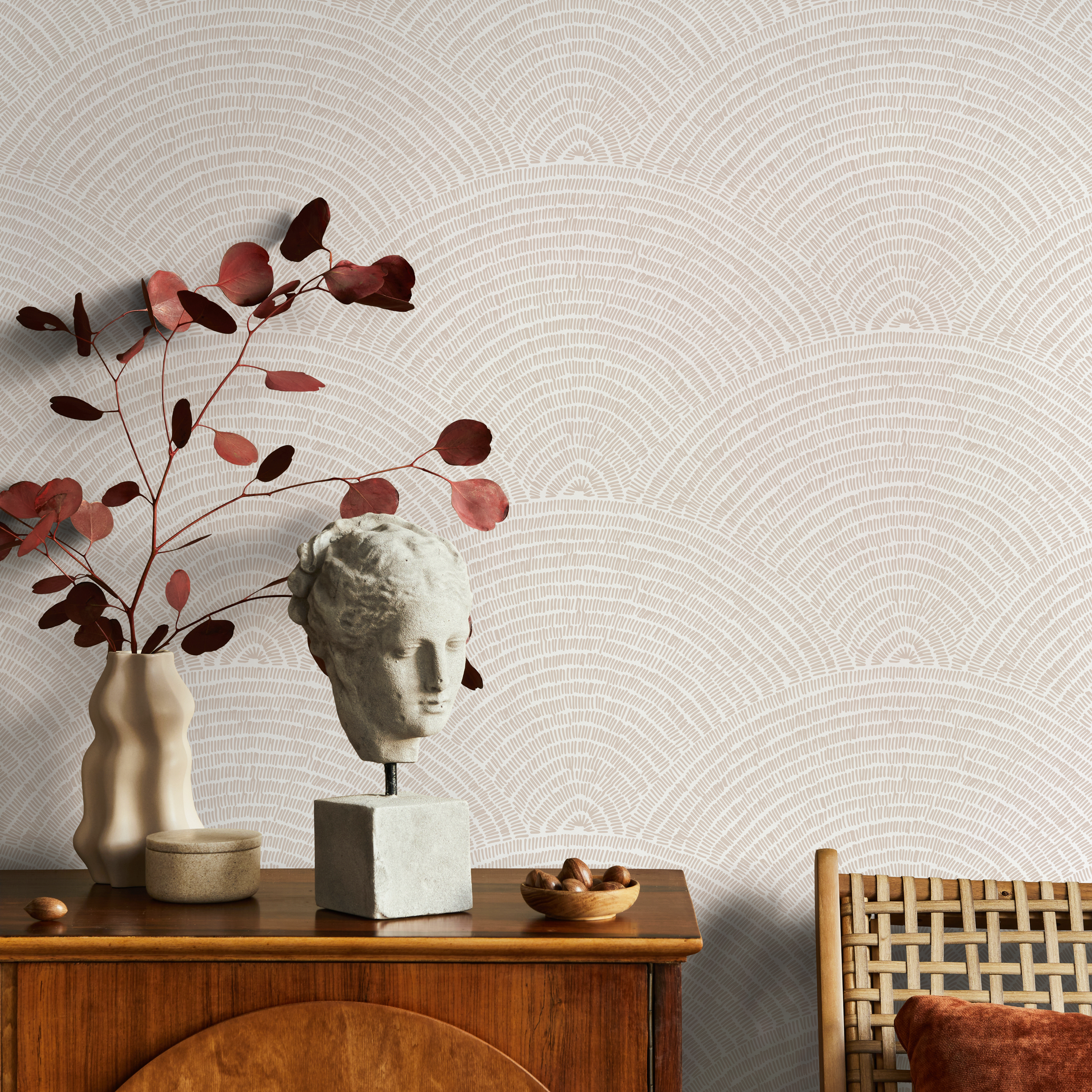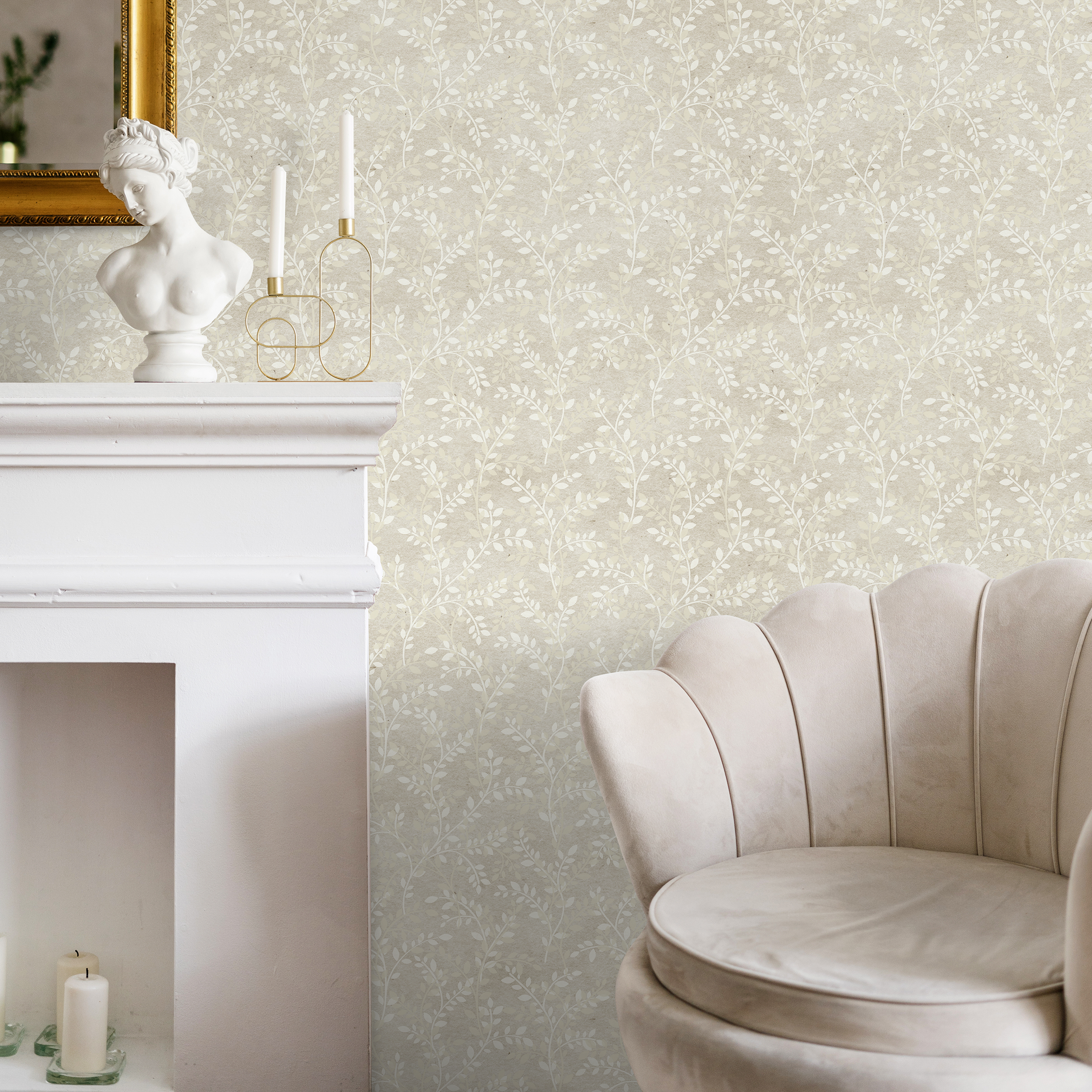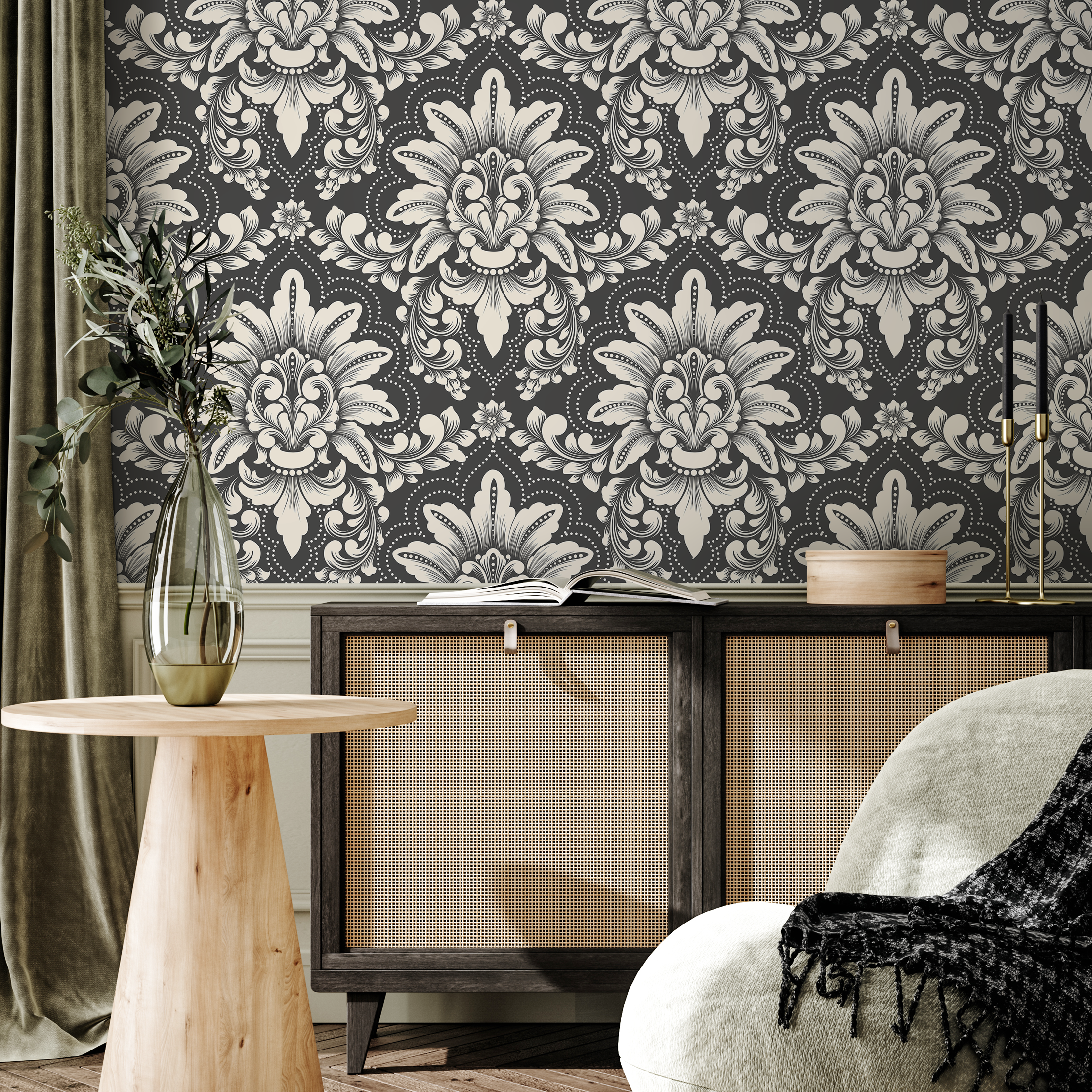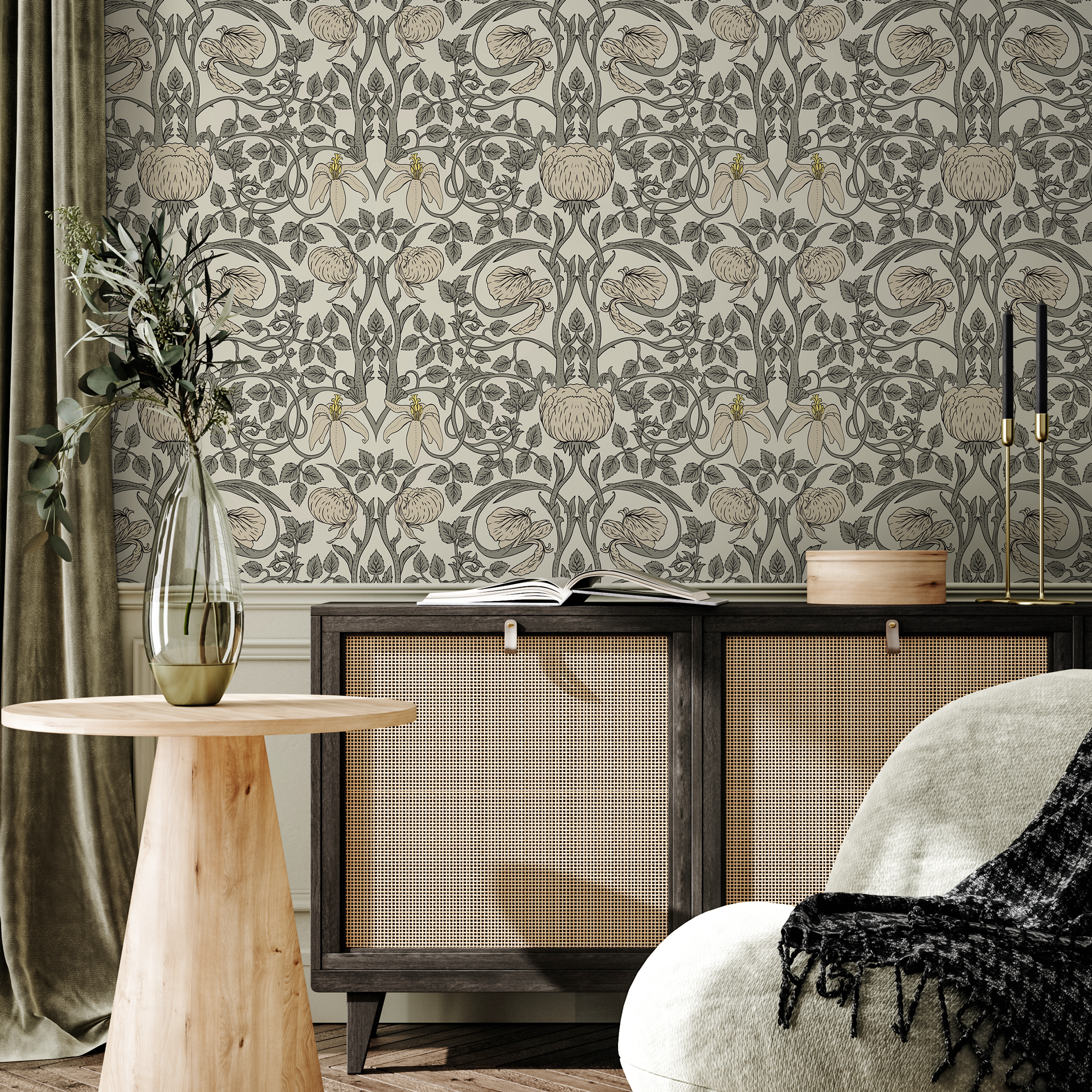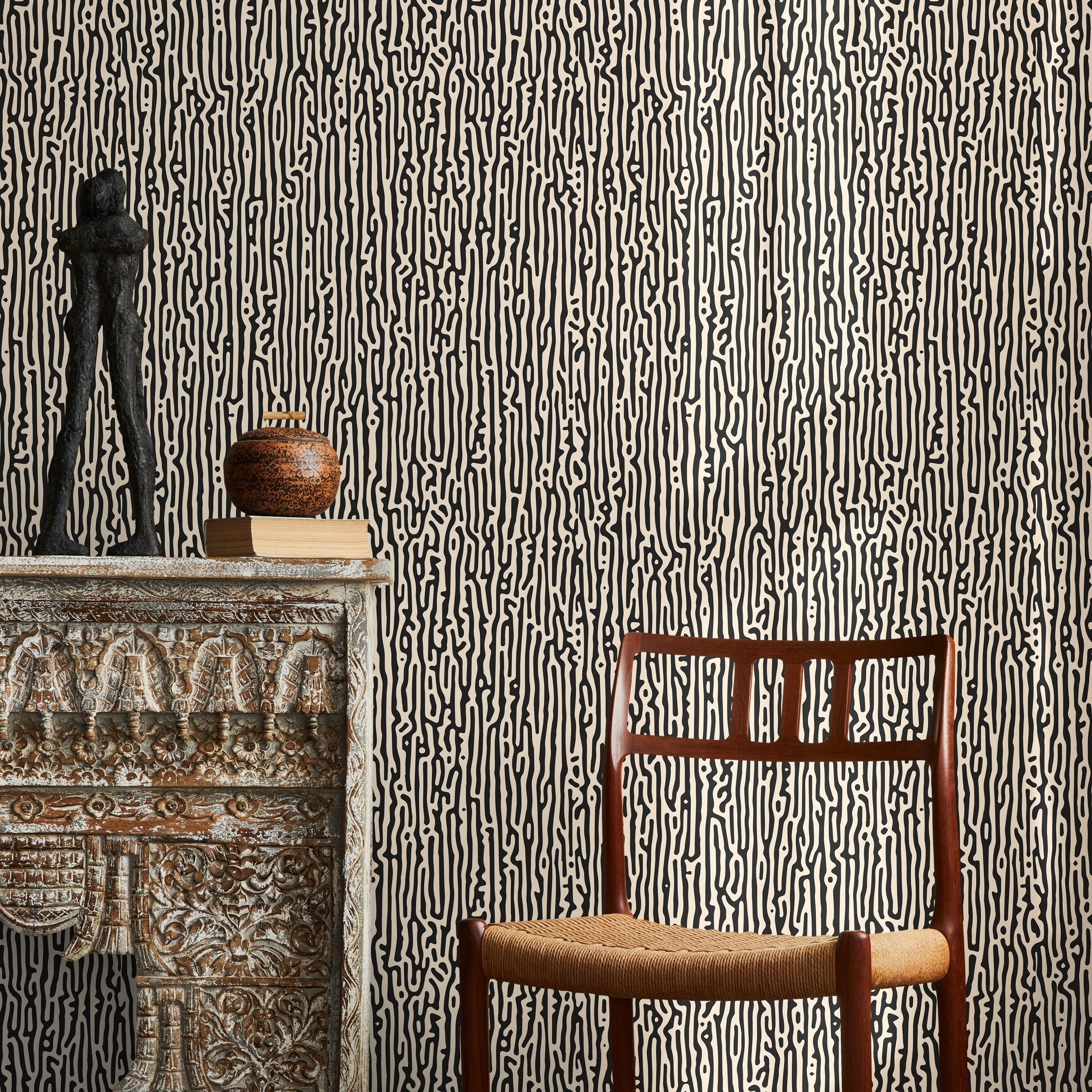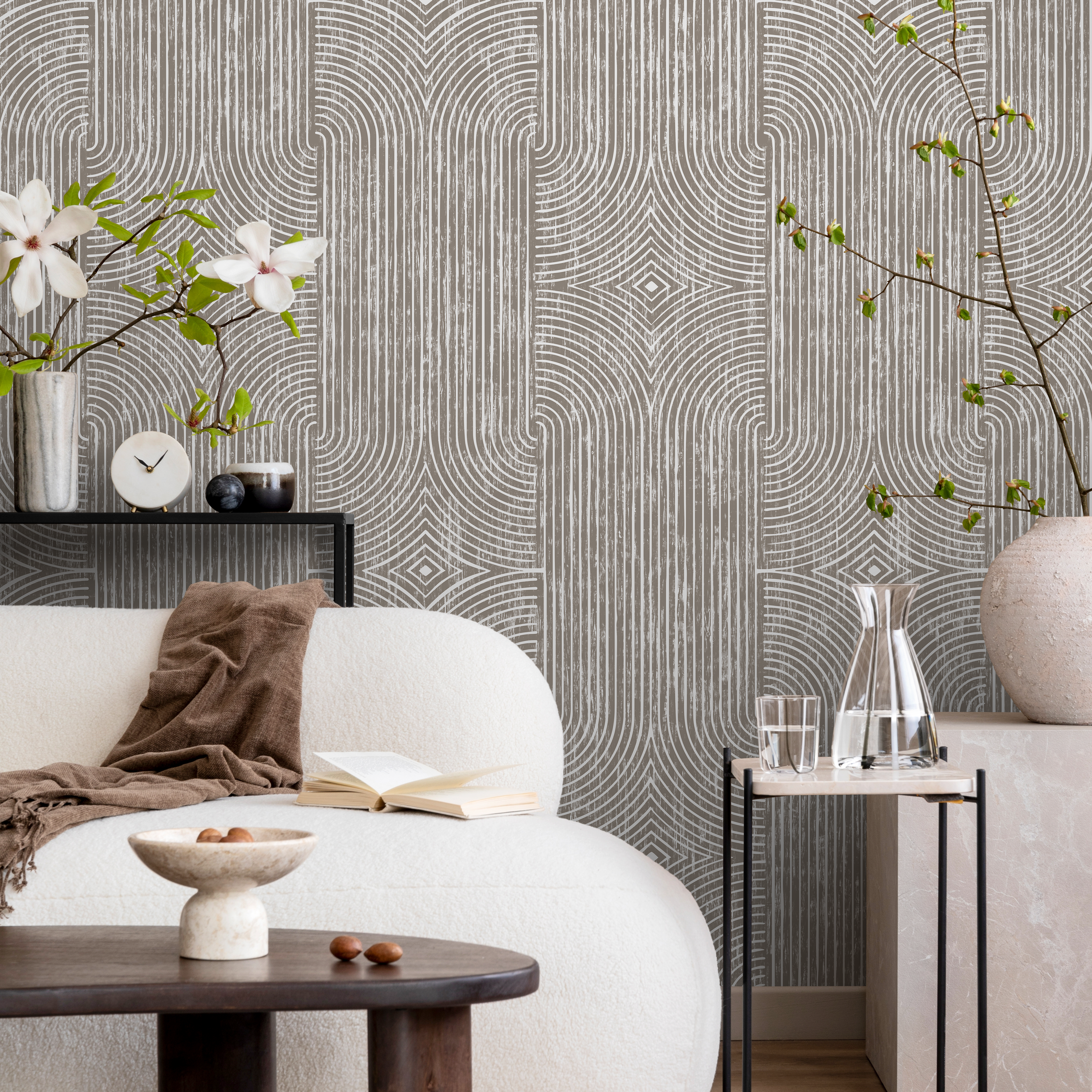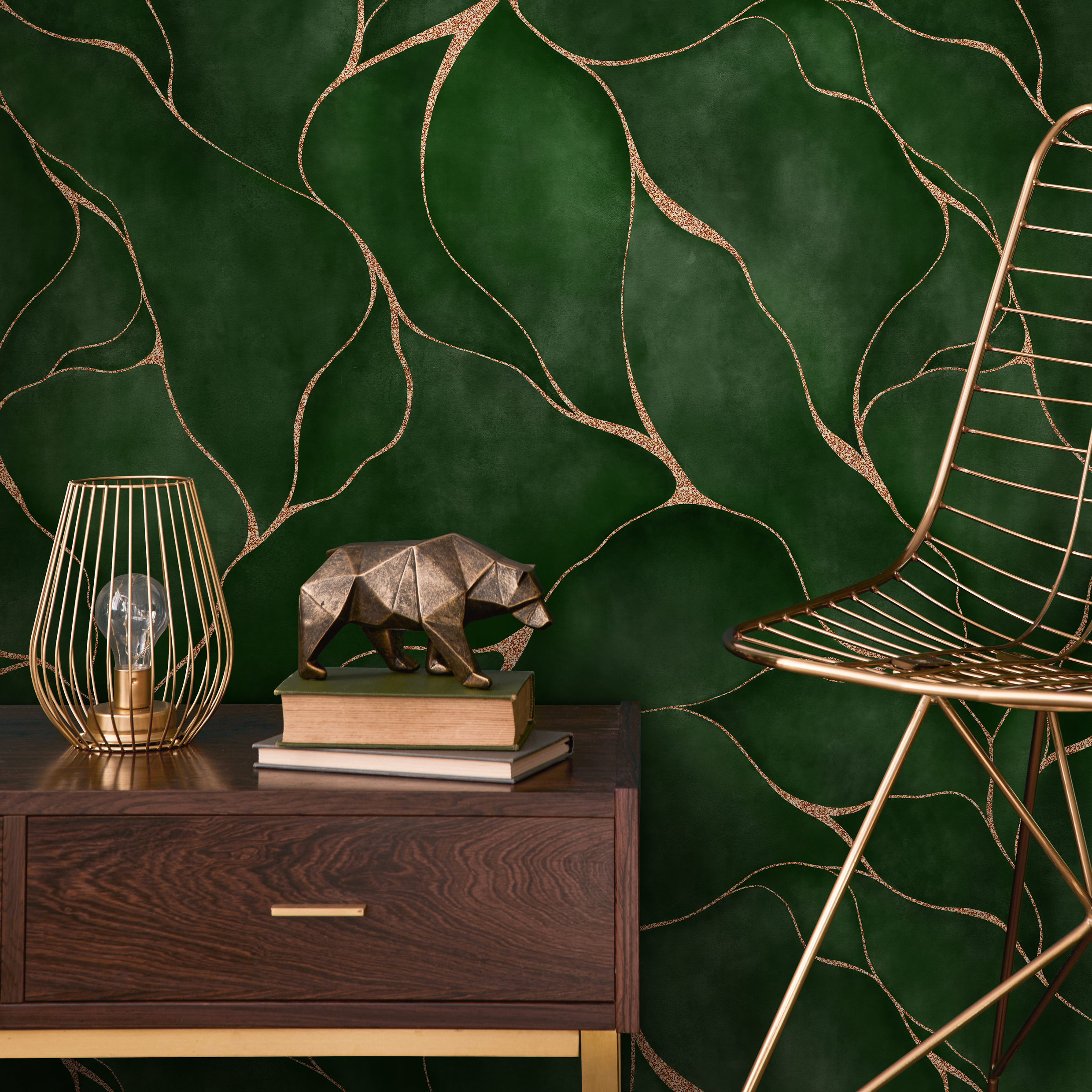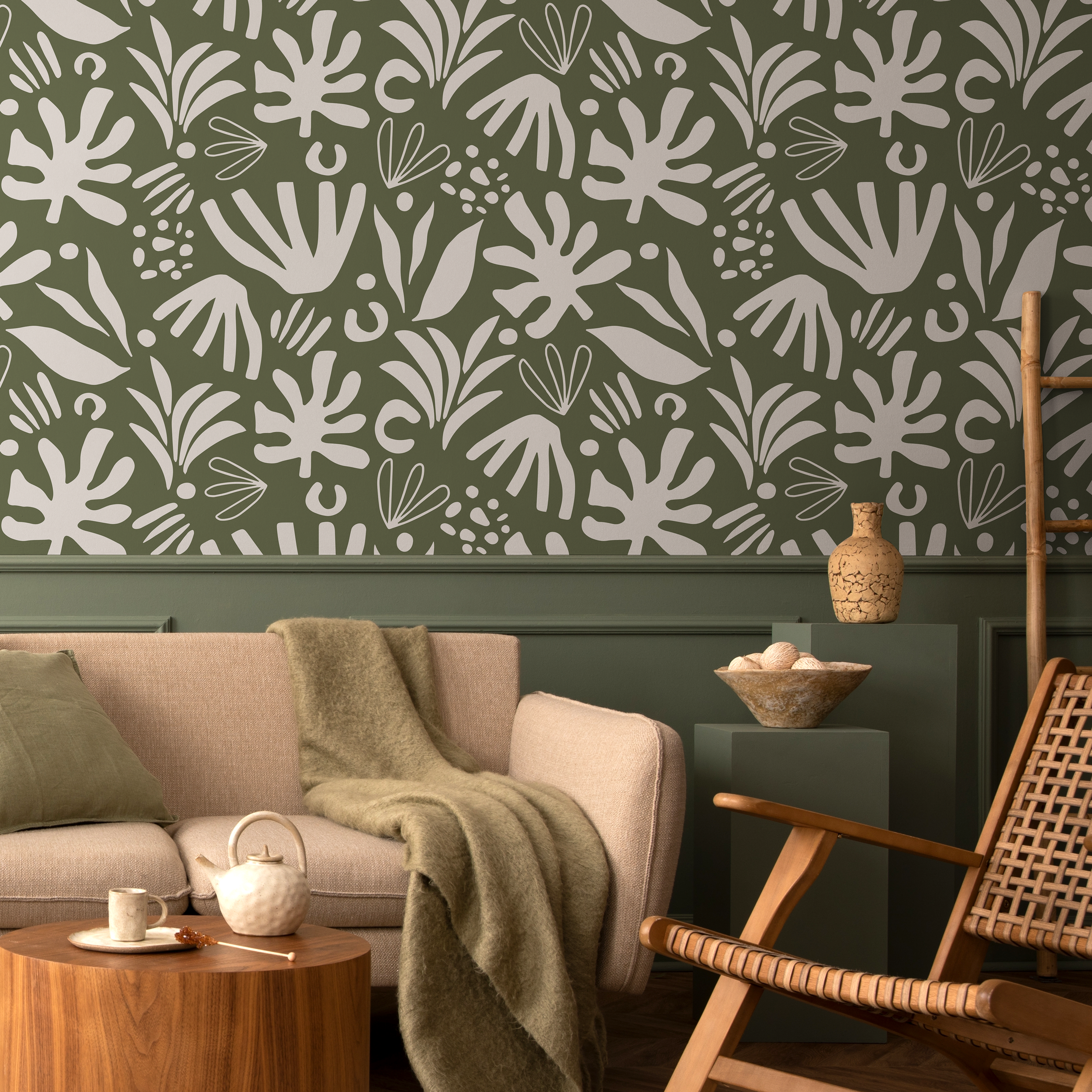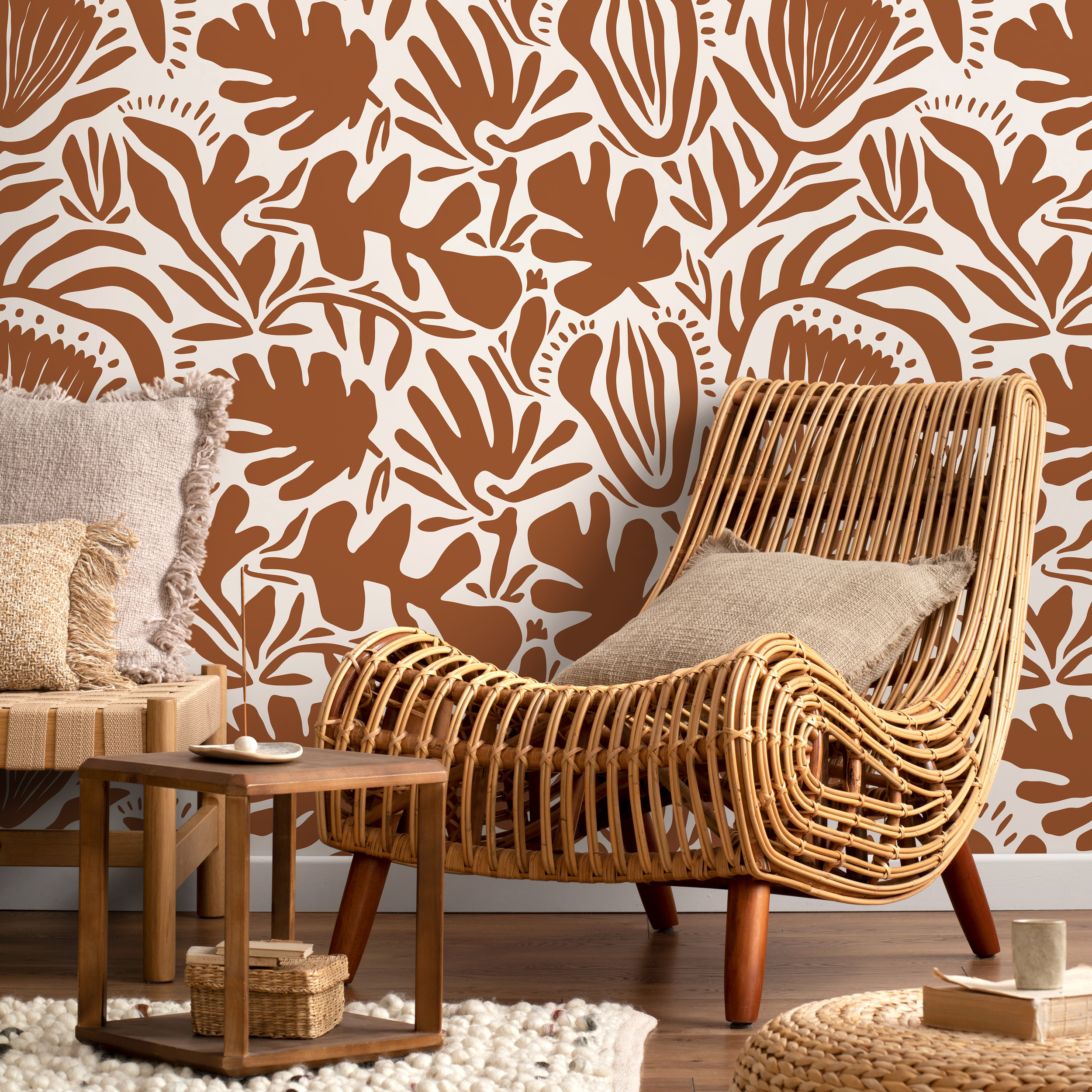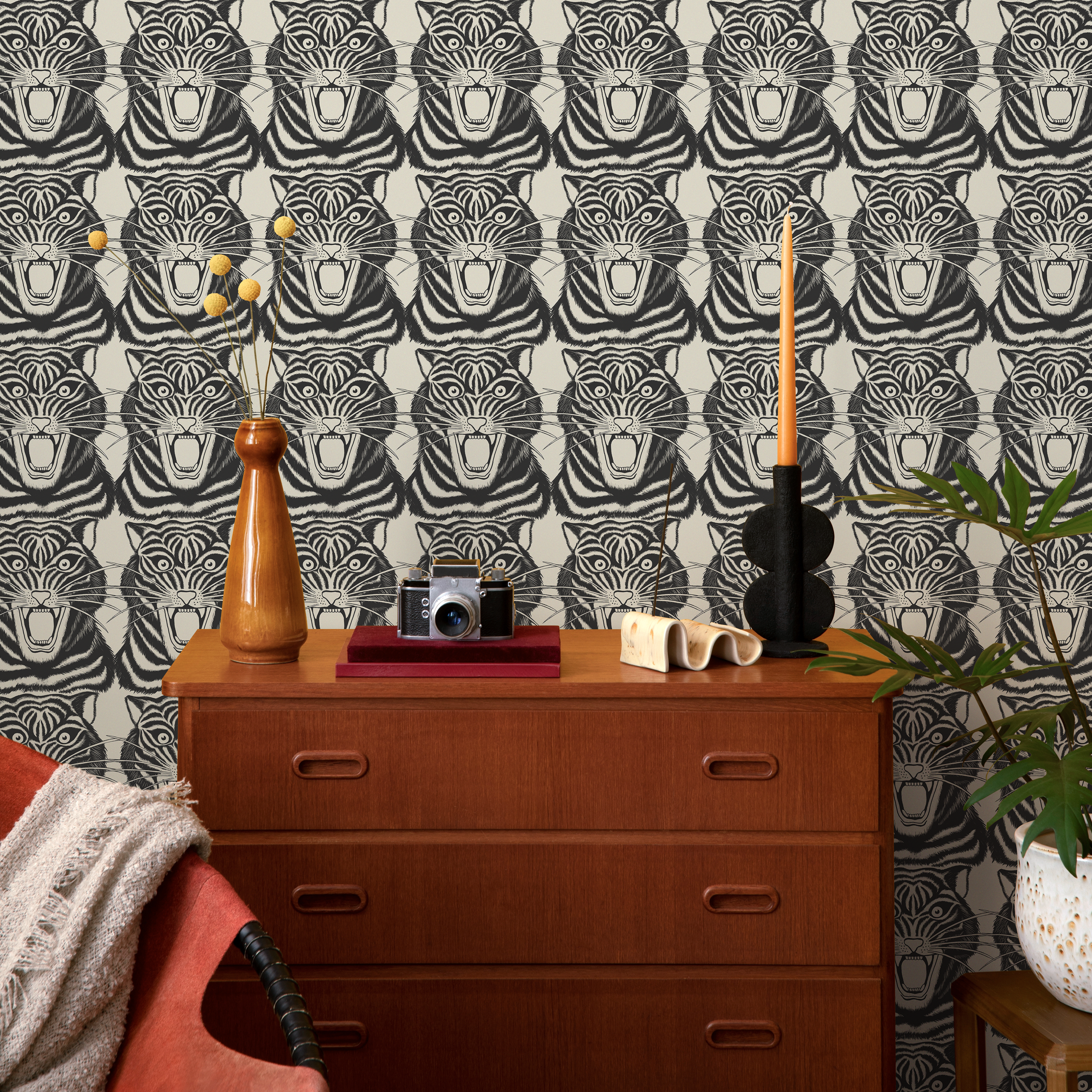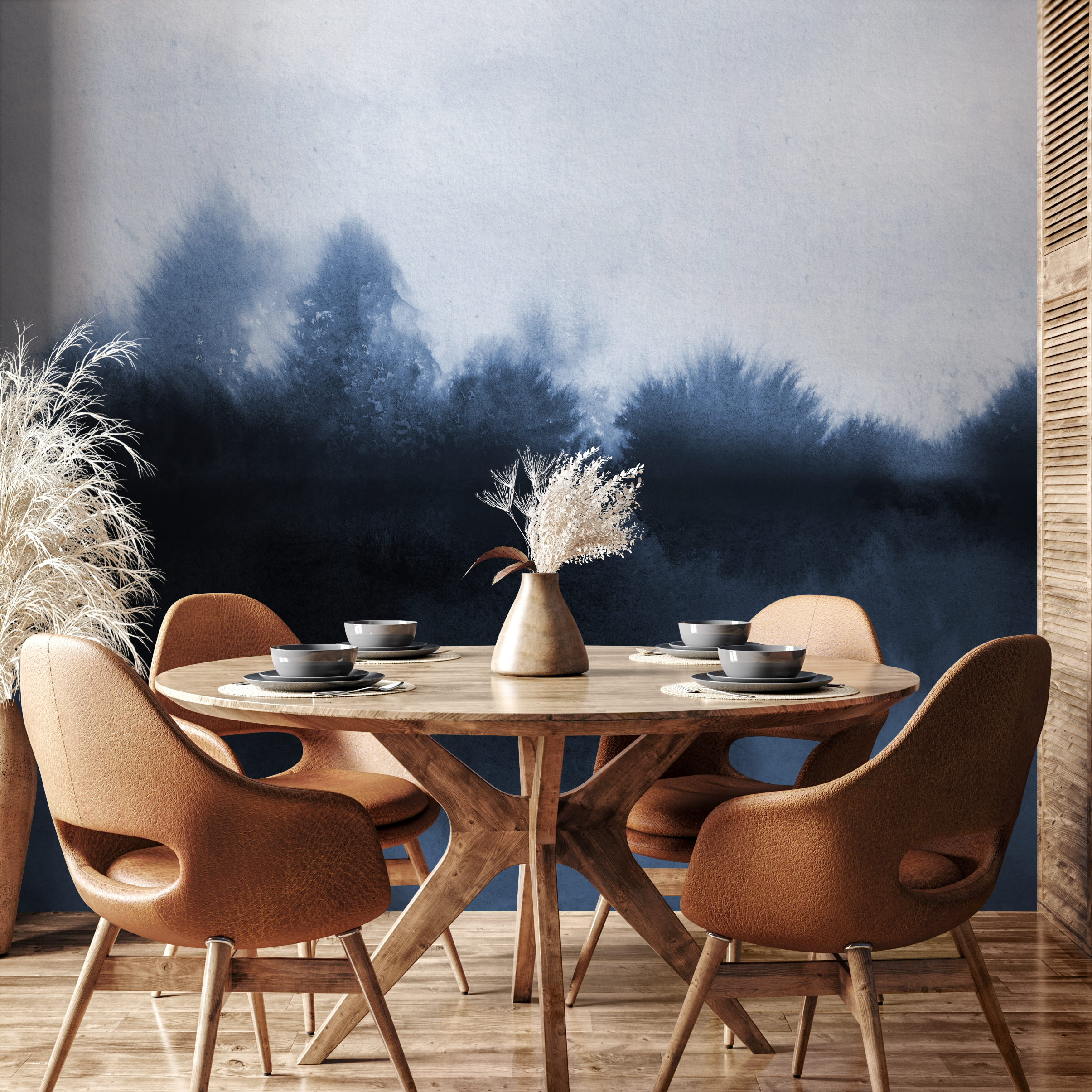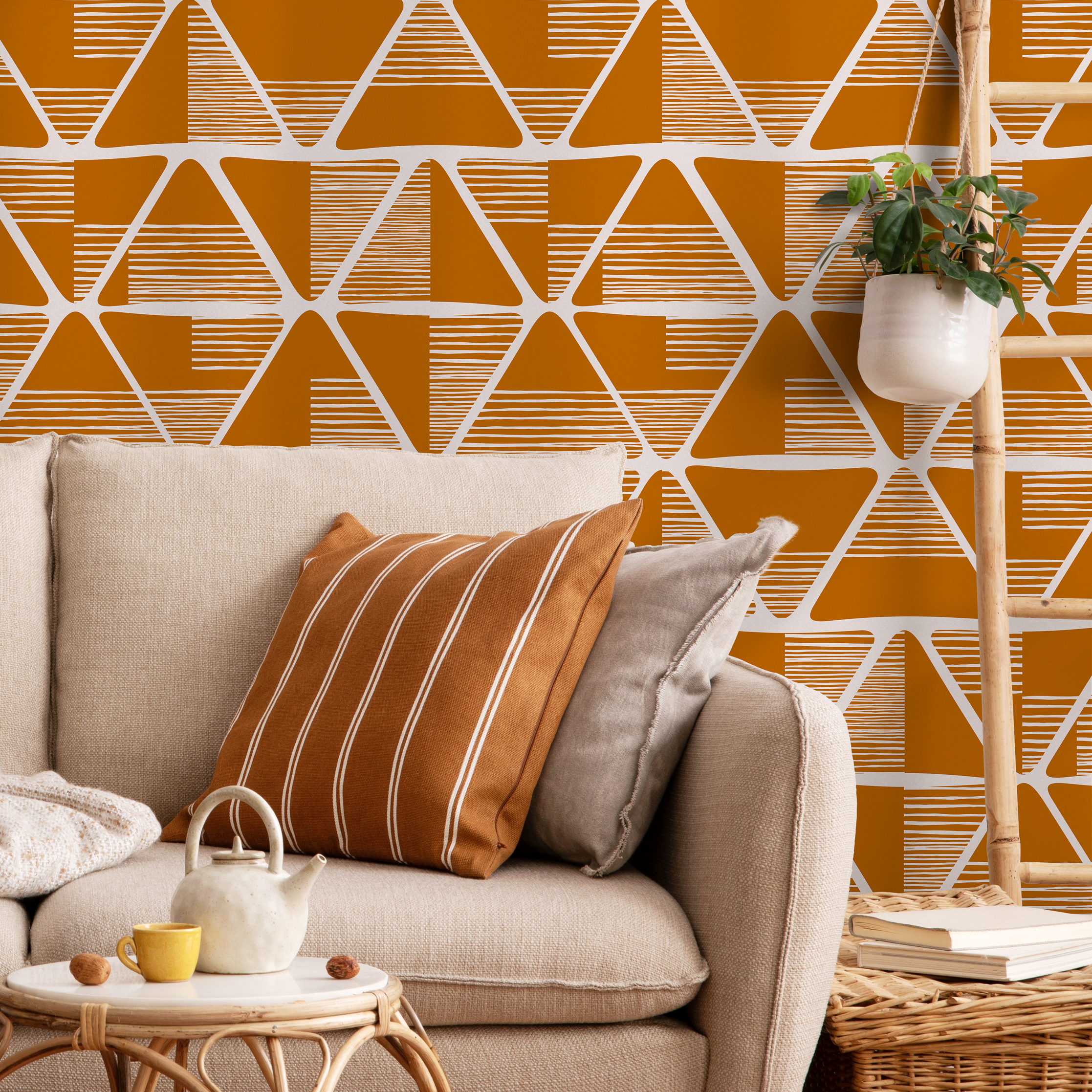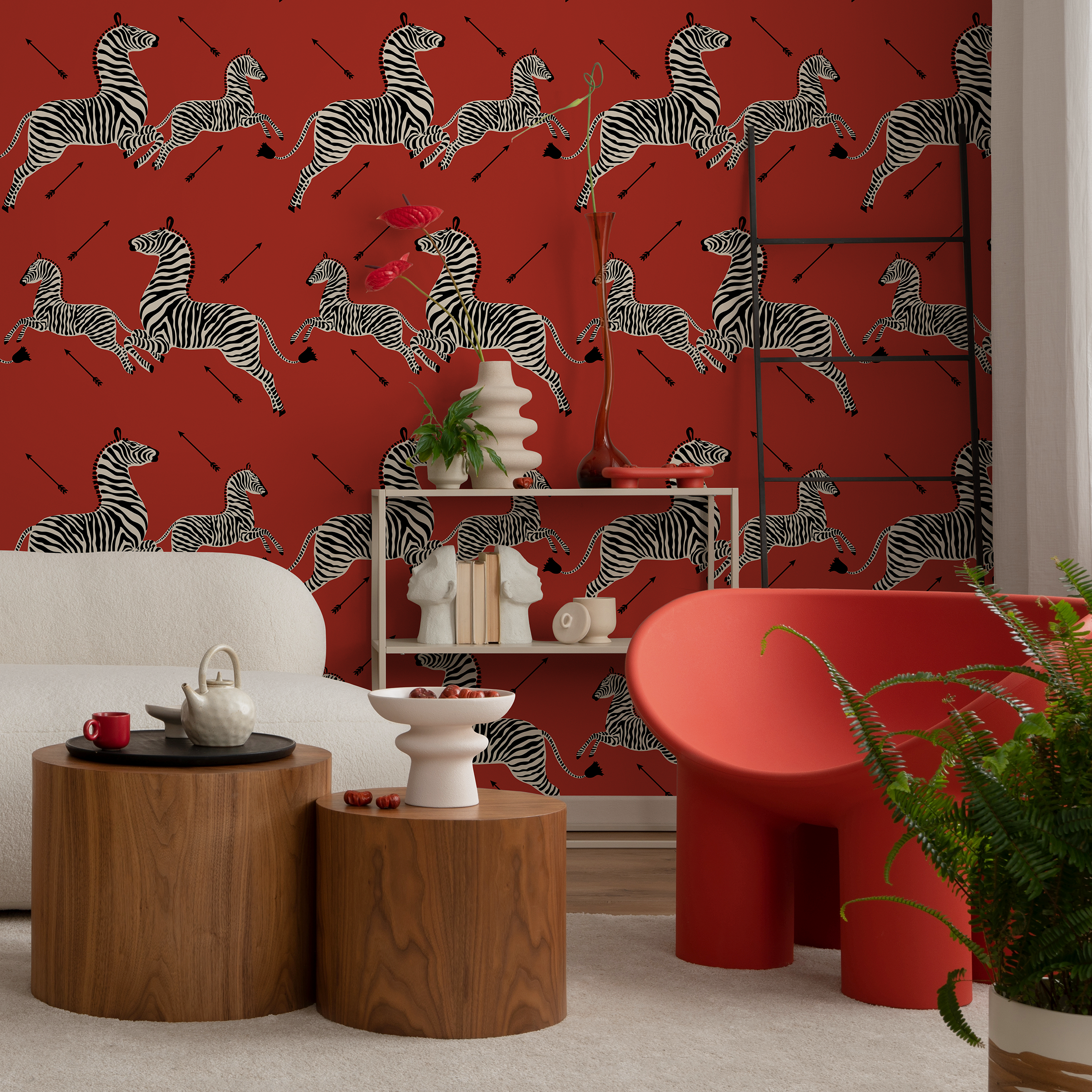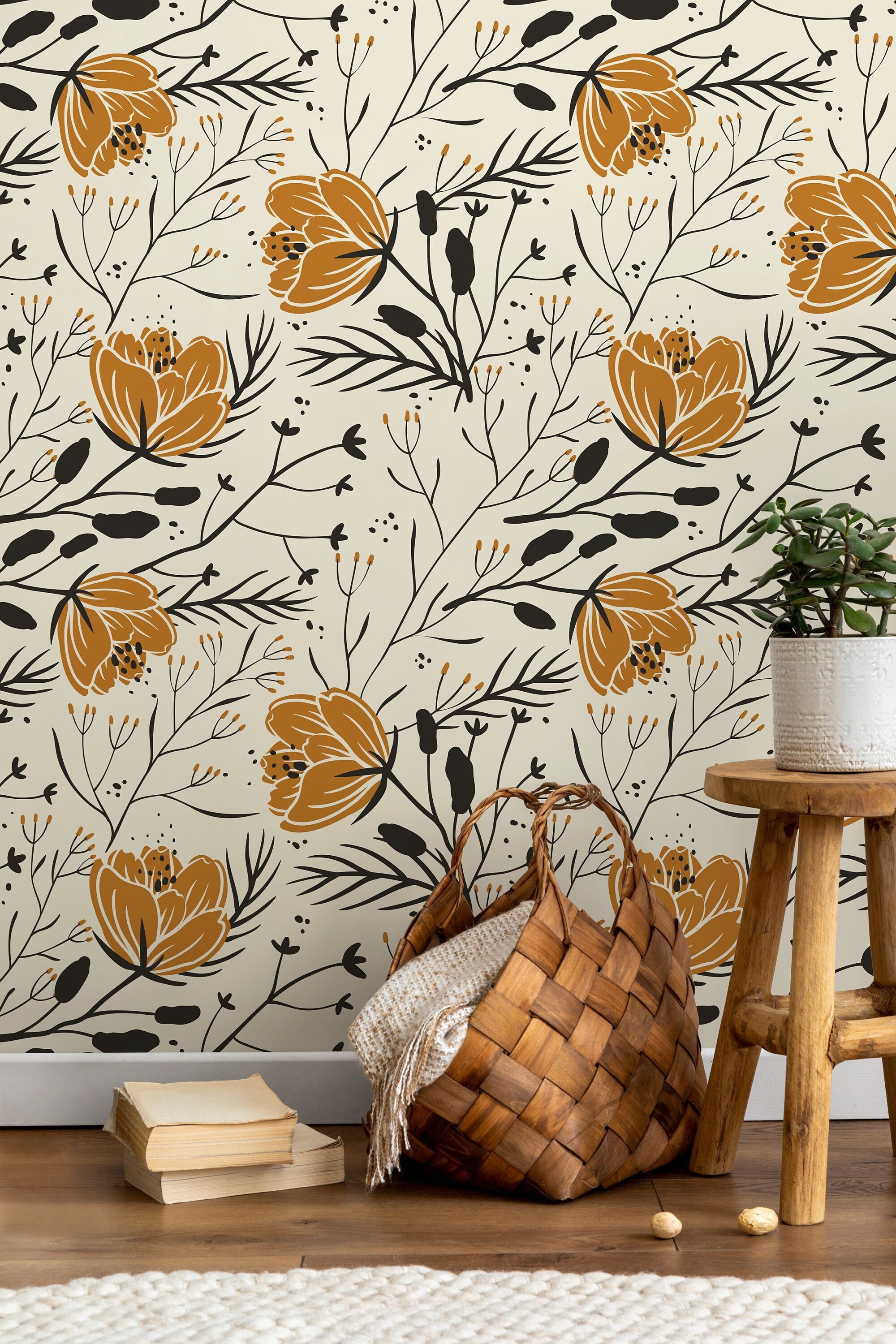Reviving Walls: Unveiling the Magic of Textured Finishes over Wallpaper
Introduction: The Art of Texturing Over Wallpaper
Reviving a room's walls can feel like a breath of fresh air, especially when you harness the magic of textured finishes over wallpaper. This innovative design technique adds depth, character, and a unique visual appeal to your space. Whether you're tired of your old wallpaper or simply seeking a change, texture painting over wallpaper can transform your home's aesthetics while maintaining the integrity of its original decor.
The process, however, isn't as simple as slapping a new coat of paint on your old wallpaper. It requires understanding the unique properties of wallpaper, the potential risks and rewards of texturing over it, and the techniques to prepare and apply the texture effectively.
This article, titled 'Reviving Walls: Unveiling the Magic of Textured Finishes over Wallpaper,' explores the question, "Can you put texture over wallpaper?" Armed with expert advice and practical tips, you can navigate this home improvement project with ease, creating a stylish, updated look for your walls.
Stay tuned as we delve into the types and characteristics of different wallpapers, the importance of proper preparation for texture painting, and how to achieve professional results. We will also explore the world of textured finishes, providing examples and inspiration to help you transform your living space.
Ready to revive your walls? Let's get started!
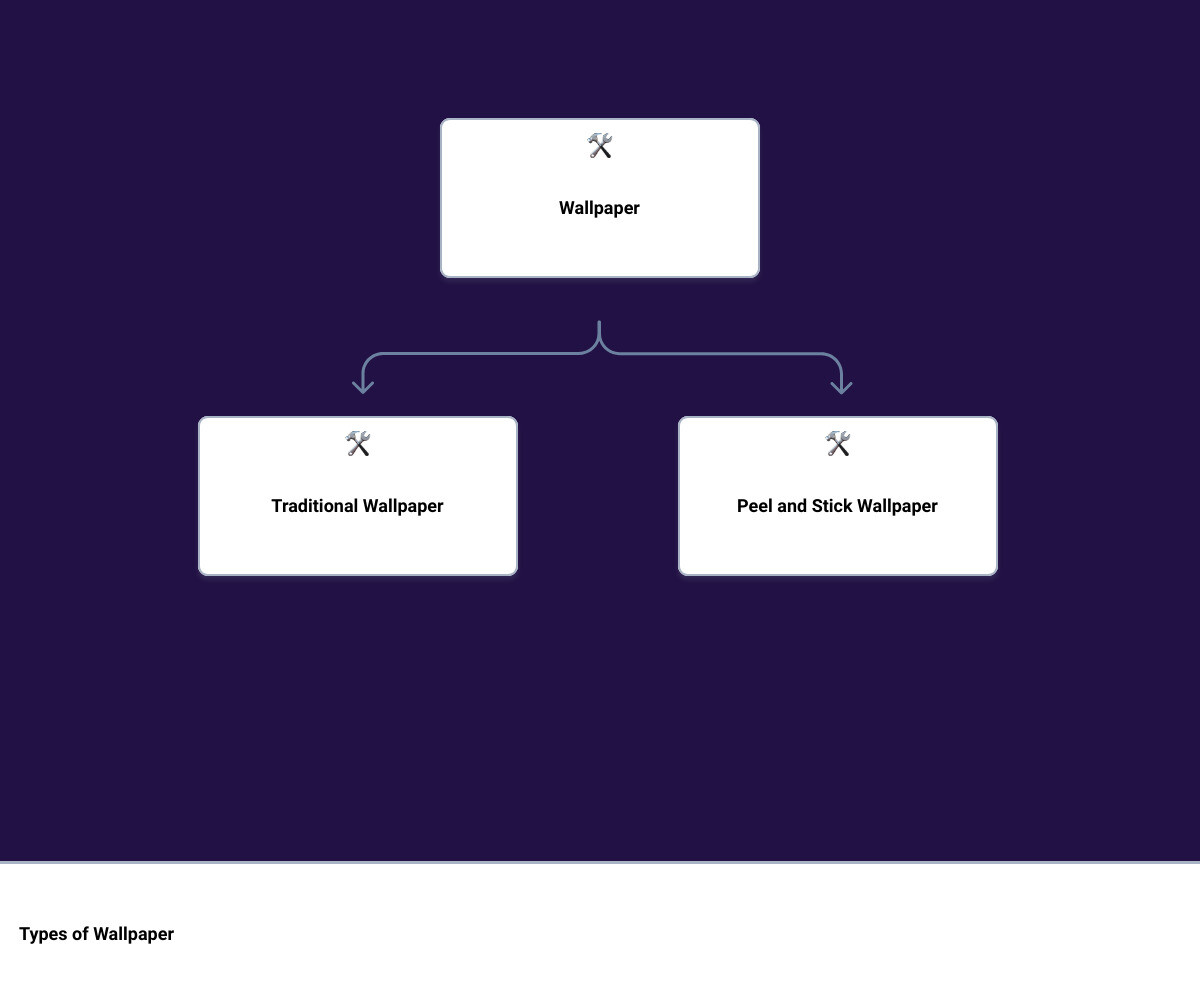
Understanding Wallpaper: Types and Characteristics
As you embark on the journey of reviving your walls, it's essential to first understand the different types of wallpapers and their unique characteristics. This knowledge will help you make informed decisions about whether to texture over your existing wallpaper or consider other alternatives.
Traditional Wallpaper
First up is the traditional wallpaper. This type of wallpaper has been a favorite among homeowners for years due to its durability and wide range of design options. Traditional wallpaper is applied using a special adhesive, and it's known for its long-lasting appeal. However, keep in mind that if your wall is covered with traditional wallpaper, it might not be the best candidate for texturing over. This is because the process of removing traditional wallpaper can be quite labor-intensive and could potentially damage your walls.
Peel and Stick Wallpaper
Next, we have the increasingly popular peel and stick wallpaper. This type of wallpaper is a great choice for those who love to change up their decor frequently, as it's easy to apply and remove without leaving any residue. It's also a fantastic option if you're considering texturing over wallpaper. Because peel and stick wallpaper is easier to remove than traditional types, it reduces the risk of damaging your walls in the preparation phase. However, it's crucial to ensure that the wall is thoroughly cleaned and dried before applying the new texture to prevent any adhesive residue from interfering with the application.
Commercial Wallpaper
Finally, we have commercial wallpaper, often used in office buildings, hotels, and other commercial spaces due to its durability and easy maintenance. This type of wallpaper is typically thicker and more robust than residential wallpaper, making it an excellent choice for high-traffic areas. If your walls are adorned with commercial wallpaper, you might need to take extra precautions when texturing over it. Because of its thickness, it might be more challenging to create a seamless texture over commercial wallpaper.
In conclusion, understanding the type of wallpaper you have on your walls is the first step in determining whether texturing over it is the right choice for you. Each type has its unique characteristics that can impact the process and the final result. Remember, it's always best to consult a professional if you're unsure, and don't hesitate to explore the vast array of stunning wallpapers available at ONDECOR that could breathe new life into your living spaces.
The Risks and Rewards of Texturing Over Wallpaper
Just like any home improvement project, painting or texturing over wallpaper comes with its share of challenges and benefits. It's crucial to weigh these before embarking on this transformative journey for your walls.
Potential Risks: Bubbling, Peeling, and Weight Issues
The first risk you might encounter is bubbling or peeling. When you apply paint or texture compound over wallpaper, the water in these substances may seep through the wallpaper. This can potentially loosen the wallpaper glue, leading to unsightly bubbles or peeling. If this happens, you may have to cut out the damaged areas, float them with drywall compound and repaint, or re-texture. In some cases, you might need to completely strip the wallpaper, which can be messier and more labor-intensive than if you had started with a wallpaper-free wall.
The other potential risk involves the weight of the new material. Applying texture or paint over wallpaper can exert shear stress on the wallpaper glue, which it may not be equipped to handle. This can lead to the glue failing, causing the wallpaper, along with your new paint or texture, to spontaneously peel off. It can also manifest as bubbles or ripples on the surface. Fixing these issues after the fact can be more work than if the wallpaper had been removed from the beginning.
Rewards: A Unique, Visually Appealing Look
Despite these challenges, there are several compelling reasons to consider texturing over wallpaper. One of the biggest rewards is the unique, visually appealing look you can achieve. Wallpaper already offers a wide range of designs, patterns, and colors. Adding texture to it can create a truly distinctive aesthetic that's hard to replicate with paint alone. This can make your walls a striking feature of your home décor.
Moreover, with the right wallpaper and preparation, texturing over wallpaper can be both feasible and rewarding. Vinyl or vinyl-coated wallpapers tend to be water-repellant, reducing the risk of water seeping through and loosening the glue. A good primer, such as an oil-based stain block primer, can also offer some protection against water damage.
In conclusion, while there are risks associated with texturing over wallpaper, the potential rewards make it a worthwhile consideration. With careful planning, the right materials, and a bit of creativity, you can create stunning, texturized walls that add depth and personality to your home. Discover the magic of textured finishes with ONDECOR's eco-friendly wallpapers to revive your walls in an appealing and sustainable way.
Preparing Your Wallpaper for Texturing
As with any home improvement project, the first step in texturing over wallpaper is to ensure that you have the right foundation. This process involves identifying the appropriate wallpaper, removing existing wallpaper if necessary, and filling in gaps or holes with joint compound.
Identifying the Appropriate Wallpaper
The first step in preparing your wallpaper for texturing is understanding the type of wallpaper you're dealing with. Traditional wallpaper, peel and stick wallpaper, or commercial wallpaper - each has its unique characteristics that may impact the texturing process. For instance, if you're dealing with traditional wallpaper, it's essential to select special wallpaper glue and textured wallpaper designed for use with latex or acrylic paints. This ensures easier removal later on and allows the new texture to adhere correctly.
Removing Wallpaper: When and Why It's Necessary
Next, assess if you need to remove the current wallpaper. Painting over multiple layers of wallpaper can lead to uneven surfaces and unappealing final results. If there are more than two layers of wallpaper, it's recommended to strip them away before painting. You can use a wet stripper to speed up the process and leave behind a perfectly smooth surface for texturing. As ONDECOR points out, removing outdated wallpaper and stripping away any peeling edges is essential when prepping your wall for texture painting.
Filling in Gaps or Holes with Joint Compound
Once the wall is stripped of excess wallpaper, the next step is to identify and address any imperfections on the wall's surface. Look for any noticeable gaps or holes and fill them in with a joint compound. The joint compound creates a smooth surface, allowing for a more seamless transition when applying the new texture.
Remember, successful texture painting requires more than just applying a new layer of paint. It's about careful preparation and attention to detail. By identifying the appropriate wallpaper, removing existing layers when necessary, and filling in gaps or holes, you're setting the stage for a successful texturing project. Revive your walls with the magic of textured finishes and transform your home into a unique, visually appealing space.
The Process of Applying Texture Over Wallpaper
Ready to embark on the exciting journey of applying texture over wallpaper? This process involves three critical steps: applying primer, blending new textures with existing ones, and painting in layers for immaculate results. Let's dive into each of these steps to help you transform your wallpapered walls into a textured masterpiece.
Applying Primer: The Importance of Oil-Based or Shellac-Based Primers
Before adding any texture, the first step is to apply the right primer. This stage is crucial for ensuring a strong bond between the old wallpaper and the new textured finish. The type of primer you use will depend on the kind of wall you're working on. For walls with existing wallpaper, oil-based or shellac-based primers are the go-to options. These primers offer superior adhesion, blocking out any underlying designs or colors on the wallpaper and providing a solid base for the texture.
For plaster walls that aren't covered by wallpaper, a latex primer should suffice. Regardless of the type of primer, aim to cover the entire wall surface evenly with at least one coat. Allow the primer to dry completely before proceeding to the next stage: blending new textures with existing ones.
Blending New Textures with Existing Ones
Once your primer has dried, it's time to unleash your creativity! You can blend new textures with the existing ones on the wallpaper to create a unique and visually appealing look. Begin by dipping an angled brush into some oil-based paint and stroke it across the walls in random patterns. This process will create abstract designs that beautifully contrast against the existing wallpaper texture.
Assess the tone of your initial strokes - do they need further blending? If so, use rags or towels to dab at certain areas until you achieve your desired effect. Mixing different colors of paint can give you an intriguing blend of shades, adding depth and interest to your walls. Remember, the key here is to let your imagination run wild and experiment with various textures and designs.
Painting in Layers for Successful Results
After blending new textures, the final stage involves painting in layers. Start with a base color that complements the existing wallpaper and your new texture. Allow the base coat to dry before adding more layers of texture through brush strokes and patterns. Painting in layers will help achieve a cohesive and professional look, ensuring that the new texture blends seamlessly with the old wallpaper.
During the painting process, remember to use quality tools and appropriate paints. A good brush or roller can make a significant difference in the application of paint and the final result. Once you're done painting, clean up your workspace and store your supplies properly. This step will help prolong the life of your tools and make them readily available for your next DIY project.
In conclusion, applying texture over wallpaper is a process that demands careful planning, precision, and creativity. With these steps, you're well on your way to reviving your walls with stunning textured finishes. Just remember, the outcome of your project will largely depend on the time and effort you put into the preparation and application stages. So, take your time, pay attention to the details, and watch as your walls transform into a work of art.
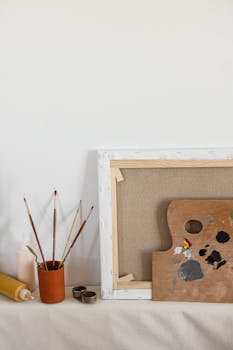
Finishing Touches for a Professional Look
When it comes to home decor, the difference between an amateur and a professional finish is often in the details. The final touches to your texture-over-wallpaper project can make or break the final result. Let's delve into the essentials of these finishing touches to ensure a professional look.
Choosing Quality Tools and Appropriate Paints
The key to a professional finish lies in the quality of your tools and the appropriateness of your paint selection. High-quality painting tools, such as a thick-bristled brush or roller, are crucial for the even application of texture paint. A putty knife is also invaluable for smoothing out any wall imperfections prior to painting. Moreover, using a dry sponge can effectively remove excess primer or sealer.
Selecting the right paint is just as crucial. The paint should be compatible with the surface, be it wallpaper, wood paneling, or any other material. Keep in mind important factors such as color saturation and sheen, ensuring that the final look is uniform and aesthetically pleasing.
Proper Clean-Up and Storage of Supplies
A professional doesn't leave behind a mess. Proper cleanup after your painting project is as crucial as the painting itself. Make sure all your supplies are cleaned and stored appropriately after use. This not only ensures a clean and tidy workspace but also prolongs the life of your tools.
Moreover, it's essential to dispose of used materials in accordance with local regulations. This is especially true for paint and primer cans, which can be harmful if not disposed of properly.
In a nutshell, a professional look comes from the careful selection of quality tools and appropriate paints, meticulous attention to detail during the painting process, and a thorough cleanup and storage of supplies afterward. By adhering to these principles, you can ensure that your textured finishes over wallpaper will not only look stunning but also stand the test of time.
On top of all this, ONDECOR’s eco-friendly wallpapers can provide an excellent base for your textured finishes, offering a wide range of designs, durability, and cost-effectiveness. So why not give it a try and transform your walls into a work of art?

The Magic of Textured Finishes: Examples and Inspirations
Adding texture to your walls is like adding the final seasoning to a well-prepared meal. It enhances the depth and intrigue of your space. To help you visualize the potential, let's explore some examples and inspirations of textured finishes.
Physical Texture: From Sculptures to Carpets
Physical texture, also known as actual or tactile texture, refers to the patterns of variations found on a solid surface. These can range from a wide variety of materials such as fur, canvas, wood grain, sand, leather, satin, eggshell, matte, or smooth surfaces like metal or glass. The specific use of texture can impact the perceived smoothness or roughness conveyed by an artwork. For instance, the rough surface of a tree bark or the smooth texture of the Berlin Green Head, a 500BC sculpture, can be used as inspiration for your textured wall finish.
These physical textures can create a visually active effect, while smooth surfaces can evoke a visually restful sensation. Both types of texture can be employed to imbue a design with a sense of personality or utilized to create emphasis, rhythm, contrast, and other artistic effects.
Visual Texture: Digital Alterations and Photography
Visual texture, on the other hand, is the illusion of having physical texture. An excellent example of this is the View From the Window at Le Gras by Nicéphore Niépce#/media/File:View_from_the_Window_at_Le_Gras,_Joseph_Nic%C3%A9phore_Ni%C3%A9pce.jpg), where the image seems to have a tactile surface and depth. This form of texture is created by the repetition of shape and line and is often utilized in photography, drawings, and paintings to add a sense of realism or interpretation to the work.
In the digital world, we see an emerging trend of hypertexture which is the "realistic simulated surface texture produced by adding small distortions across the surface of an object". This advanced form of visual texture can add a stunning, intricate element to the design of your walls.
Incorporating these ideas of physical and visual textures into your wallpaper project can result in a more unique and interesting finish. Whether you prefer the rustic charm of a weathered wood texture or the sleekness of a digitally altered image, the possibilities are endless with ONDECOR’s eco-friendly wallpapers.
Now that we've explored some examples and inspirations, it's time to bring your own vision to life. With a little creativity and the right tools, you can transform a simple wall into a captivating work of art.
Conclusion: Reviving Your Walls with ONDECOR's Eco-Friendly Wallpapers
Reimagine your living spaces with the transformative power of textured finishes over wallpaper. As we've learned, there is a certain art to texturing over wallpaper, a process that requires the right materials, careful preparation, and an understanding of your chosen wallpaper's characteristics. But the rewards are worth it: a visually stunning, uniquely personal touch to your home, all while maintaining a commitment to eco-friendly practices.
ONDECOR is proud to support your creative journey. Our eco-friendly wallpapers are not only safe for your home and the planet but are also designed to inspire and captivate. With a broad range of designs, from the traditional to the modern, our wallpapers allow you to express your unique style while contributing to a sustainable economy.
Whether you're texturing over traditional wallpaper, adding new depths to a peel-and-stick design, or bringing a commercial wallpaper to life, ONDECOR is committed to providing you with high-quality, American-made products. Our team of experienced professionals is always available to assist you with any inquiries, ensuring a seamless shopping experience from start to finish. Plus, our fast and secure shipping means your chosen wallpapers will arrive ready for installation, allowing you to begin your project without delay.
Remember, texturing over wallpaper isn't just a home improvement project; it's a chance to let your creativity shine. So, don't shy away from experimenting with different textures and techniques. After all, your living space should be a reflection of you – unique, stylish, and full of personality.
So, go forth and harness the magic of textured finishes over wallpaper. With ONDECOR's eco-friendly wallpapers, you're not just reviving your walls – you're redefining your living spaces. Now, that's a transformation worth investing in.
Share

